Karnataka, a southern state in India, is blessed with an abundance of natural resources that provide a thriving ecosystem for birds. The state is home to several species of birds, such as eagles, vultures, kites, woodpeckers, parakeets, and many more.
The unique geography and climate of Karnataka offer perfect breeding grounds for these birds, and the vast forests, grasslands, lakes, and riverine habitats provide ample food sources and nesting opportunities.
From the migratory birds that flock here during winter to the resident birds that call it their home, Karnataka is a birdwatcher’s delight that attracts ornithologists and bird enthusiasts alike.
In this article, we will explore the various species of birds that can be found in Karnataka and learn about their habitat, diet, and conservation efforts to protect these magnificent creatures.
1. Cotton Pygmy Goose
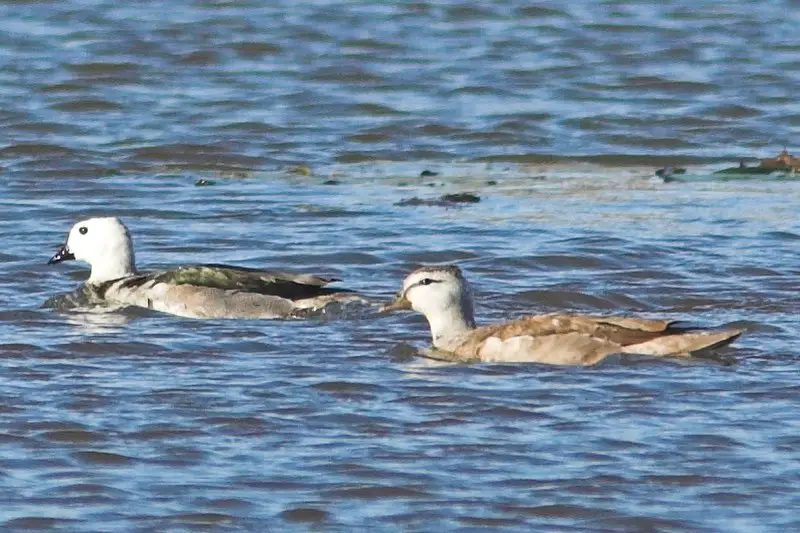
The Cotton Pygmy Goose is a small perching duck found throughout Asia and Southeast Asia, extending south to Queensland.
It stands out among waterfowl as one of the smallest in the world, with a quill-white coloration that helps it blend into its environment.
They often live alone or in pairs but form larger groups when looking for food near bodies of water with plenty of aquatic vegetation.
These birds are omnivorous, feeding on plants like grasses and seeds alongside insects such as beetles and termites.
Their diet also includes fish eggs and larvae from time to time. The cotton pygmies’ size makes them an easy target for predators so they use their agility to quickly escape danger whenever possible.
Scientific classification:
| Kingdom | Animalia |
| Phylum | Chordata |
| Class | Aves |
| Order | Anseriformes |
| Family | Anatidae |
| Genus | Nettapus |
| Species | N. coromandelianus |
Also Featured In: Most Common Birds in China, Native Birds Of Mackay
2. Painted-Snipe
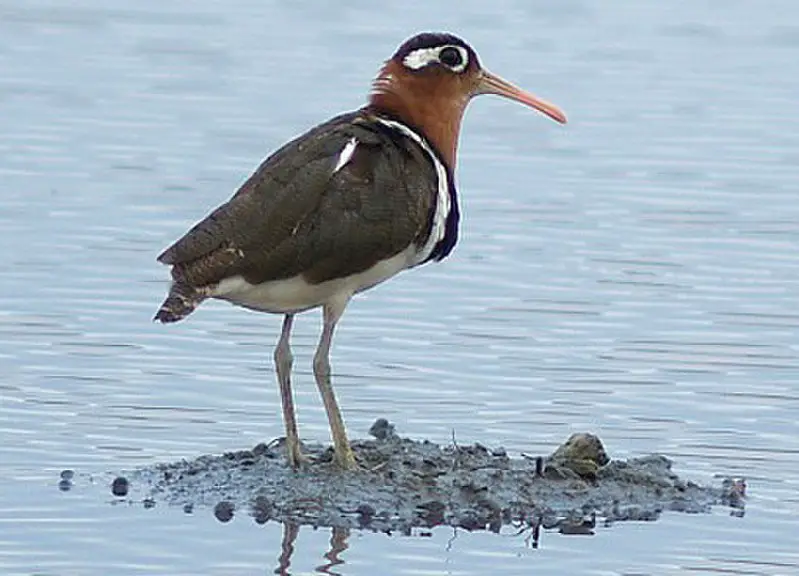
Painted snipes are beautiful and unique wading birds found in the Rostratulidae family. They have short legs, long bills, and a striking plumage which distinguishes them from true snipes.
Males tend to be smaller than females with duller overall coloration. There are three species of painted snipe.
The Greater Painted Snipe, Lesser Painted Snipe, and Australian Painted Snipe – all three have different habitats ranging from wetland pools to grasslands or mangroves depending on their region.
These birds feed mainly on earthworms but also consume insects, crustaceans and plant material when available.
As they rely heavily on wetlands for breeding purposes it is important that we protect these precious habitats so that this special bird can continue to thrive.
Scientific classification:
| Kingdom | Animalia |
| Phylum | Chordata |
| Class | Aves |
| Order | Charadriiformes |
| Suborder | Thinocori |
| Family | Rostratulidae Coues, 1888 |
Also Featured In: Queensland Birds You Should Know, Birds that Live in Tamil Nadu
3. Lesser Whistling Duck
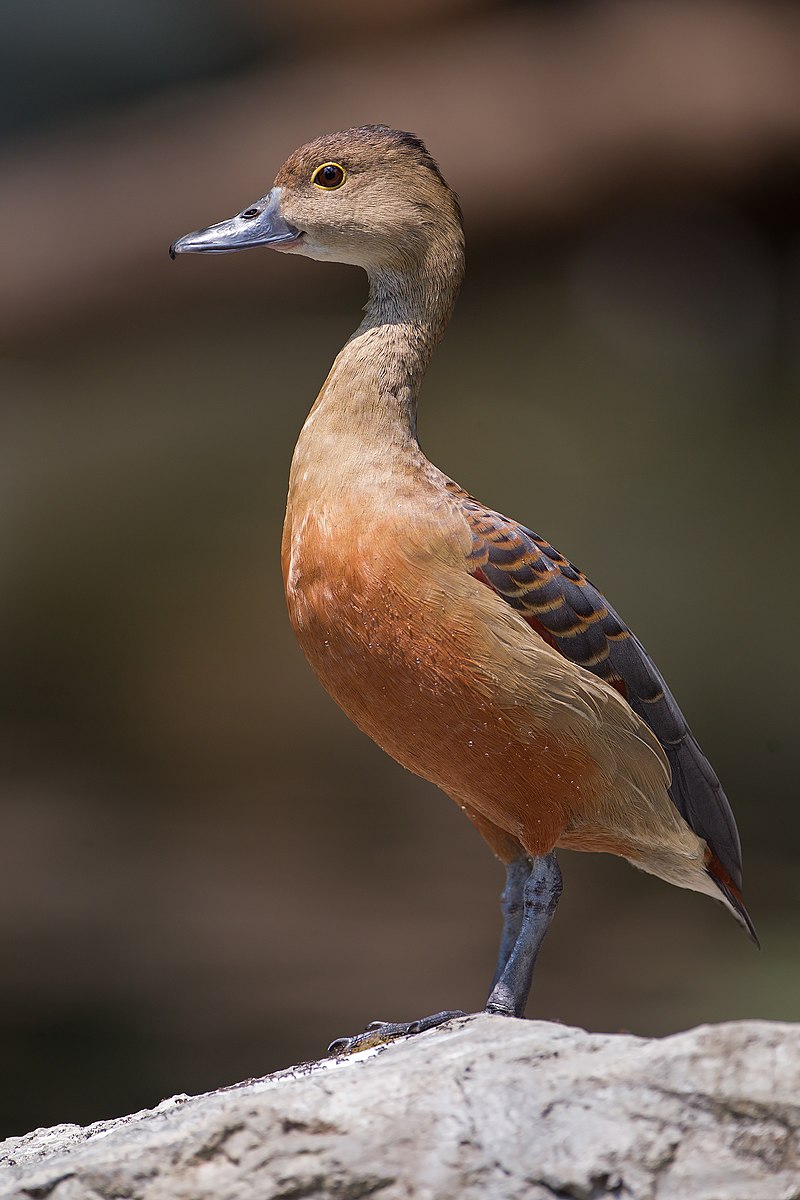
The Lesser Whistling Duck is a species of whistling duck found in the Indian subcontinent and Southeast Asia.
It has an unmistakable appearance, with its brown body, white-streaked wings and distinctive black tail feathers.
The adult ducks have red bills, eyes and legs with yellowish webbed feet for swimming.
They are generally nocturnal feeders but during the day they can be seen around lakes or wet paddy fields in flocks perching on trees or even building their nest inside tree hollows.
Their diet mainly consists of seeds from aquatic plants as well as small fish, mollusks and insects occasionally taken while wading or diving into water bodies to find food sources.Scientific classification:
| Kingdom | Animalia |
| Phylum | Chordata |
| Class | Aves |
| Order | Anseriformes |
| Family | Anatidae |
| Genus | Dendrocygna |
| Species | D. javanica |
Also Featured In: Most Common Birds of Ko Samui, Ko Samet Birds You Need To Know
4. Indian Roller
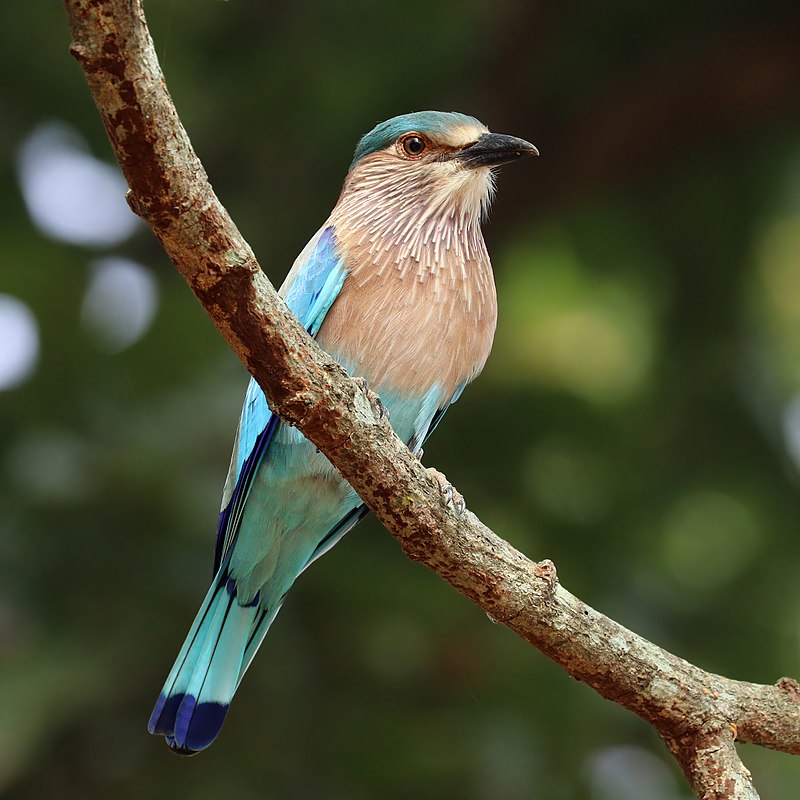
The Indian roller is a beautiful bird of the Coraciidae family. It has an average length of 12-13 inches and weighs 5.9 to 6.2 ounces with a wingspan of 26-29 inches.
Its face and throat are pinkish, while its head and back are brown with blue on its rump, light blue markings on one side of the wing, dark blue markings on other side making it easily distinguishable in flight.
Both male and female have same colouration but males tend to be slightly larger than females though they can only be differentiated when seen together closely due to similar colouring pattern between sexes.
The Indian Roller makes spectacular aerial dives from great heights during courtship display which attracts many viewers each year.
Scientific classification:
| Kingdom | Animalia |
| Phylum | Chordata |
| Class | Aves |
| Order | Coraciiformes |
| Family | Coraciidae |
| Genus | Coracias |
| Species | C. benghalensis |
Also Featured In: Common Birds in India, Birds You’ll Find in Kanha National Park
5. Painted Stork
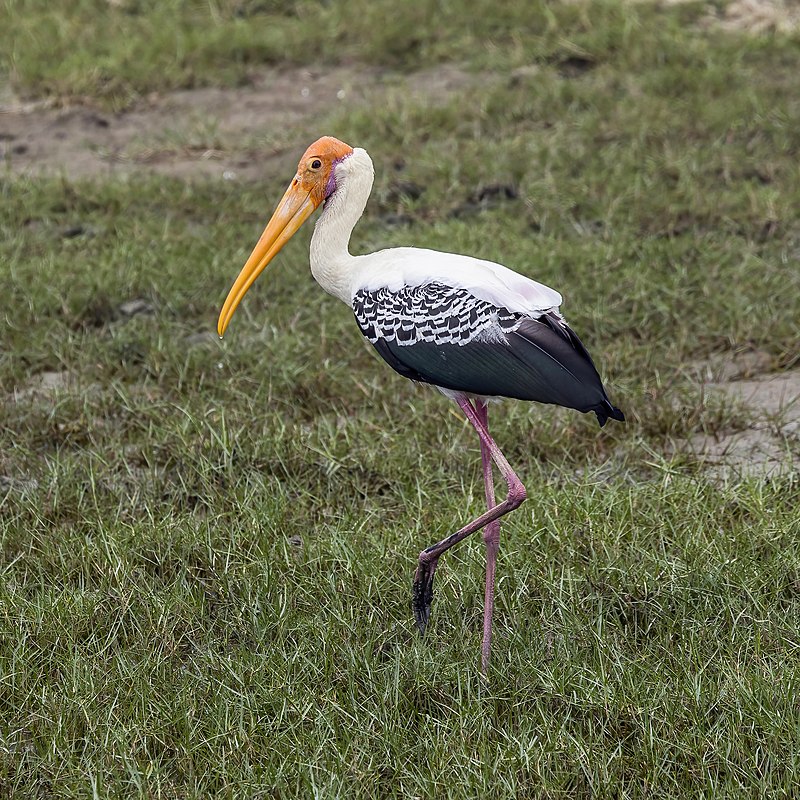
The Painted Stork is a large bird that belongs to the stork family. It has an impressive wingspan and can be found in tropical Asia, ranging from the Indian subcontinent all the way to Southeast Asia.
These birds are unique because of their pink tertial feathers, which gives them their name. They form flocks when they forage in shallow waters near rivers or lakes.
They dip their half-open beaks into water looking for food such as fish, frogs and other small aquatic creatures.
A distinctive feature of these birds is that during breeding season both males and females have red eyes with yellow rings around them.
This species also displays amazing cooperative behaviour when nesting; young storks help build nests by bringing material back to older ones who weave it together forming huge colonies on trees close to wetlands.
Scientific classification:
| Kingdom | Animalia |
| Phylum | Chordata |
| Class | Aves |
| Order | Ciconiiformes |
| Family | Ciconiidae |
| Genus | Mycteria |
| Species | M. leucocephala |
Also Featured In: Delhi Birds You Need to See, Big Birds that Live in Singapore
6. Bar-Headed Goose
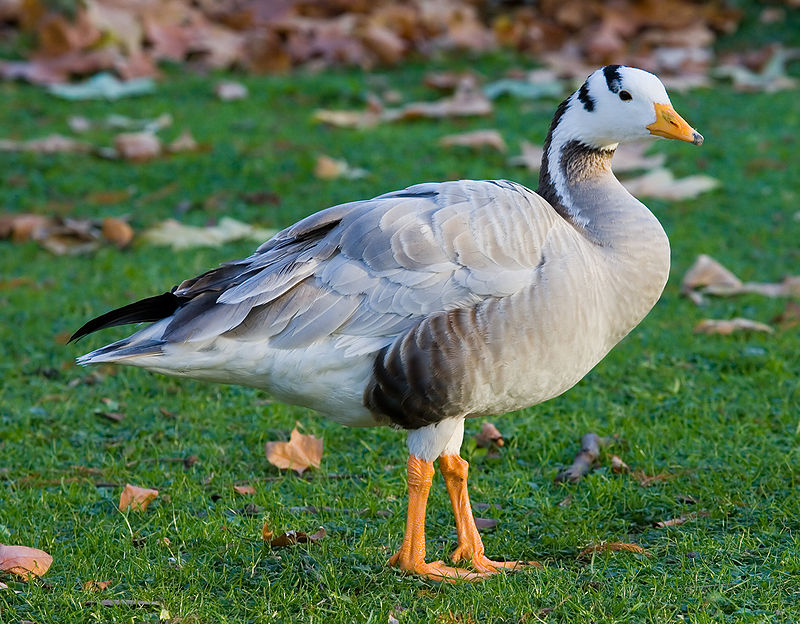
The Bar-headed Goose is an iconic bird of Central Asia, known for its remarkable ability to reach extreme altitudes when migrating over the Himalayas. It breeds in colonies near mountain lakes and winters as far south as India.
During breeding season it lays three to eight eggs at a time in ground nests. This grey goose genus Anser has no other native member species within the Indian region.
Its wings are adapted for high altitude flight, being long and pointed with small “fingers” along their length that help reduce air turbulence during rapid ascent or descent through mountainous regions.
The bar-headed goose’s strong flying skills have made it one of nature’s most impressive avian migrations.
Scientific classification:
| Kingdom | Animalia |
| Phylum | Chordata |
| Class | Aves |
| Order | Anseriformes |
| Family | Anatidae |
| Genus | Anser |
| Species | A. indicus |
Also Featured In: Flight Birds You Should Know,
7. Yellow-Wattled Lapwing
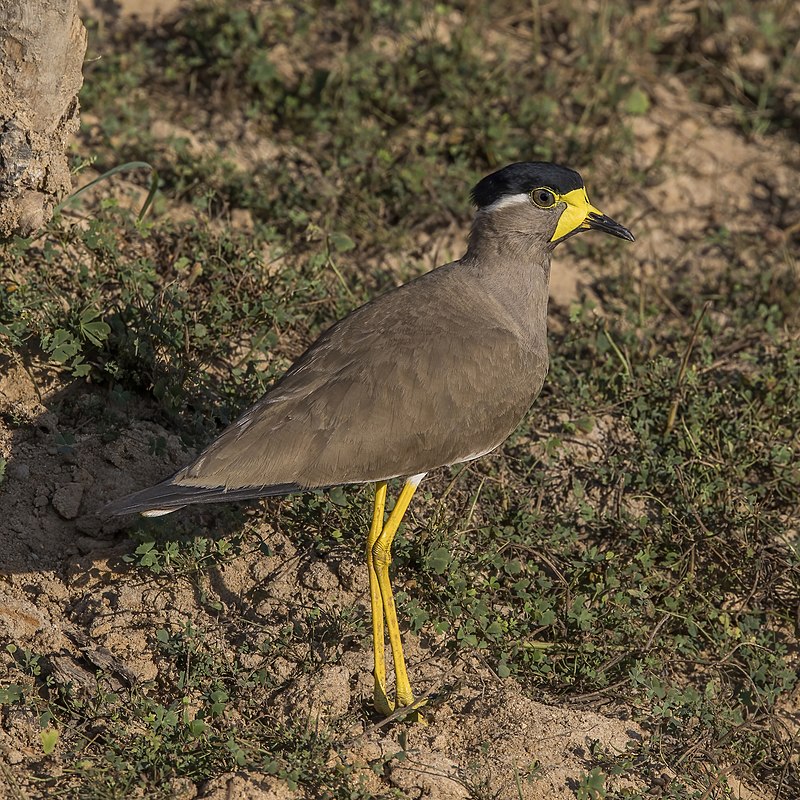
The Yellow-wattled Lapwing is a stunning bird native to the Indian Subcontinent. It has an unmistakable appearance, with its grey brown body and black cap contrasting sharply against its bright yellow legs and triangular wattle at the base of its neck.
Not only does this make it easily identifiable, but also makes it quite attractive in appearance.
The bird is capable of fast flight and has a sharp call which can be heard over long distances on dry plains across peninsular India.
Although they don’t migrate, they do make seasonal movements depending on rainfall patterns in their locale making them adaptive birds too.
Scientific classification:
| Kingdom | Animalia |
| Phylum | Chordata |
| Class | Aves |
| Order | Charadriiformes |
| Family | Charadriidae |
| Genus | Vanellus |
| Species | V. malabaricus |
Also Featured In: Birds of Andhra Pradesh,
8. Asian Openbill
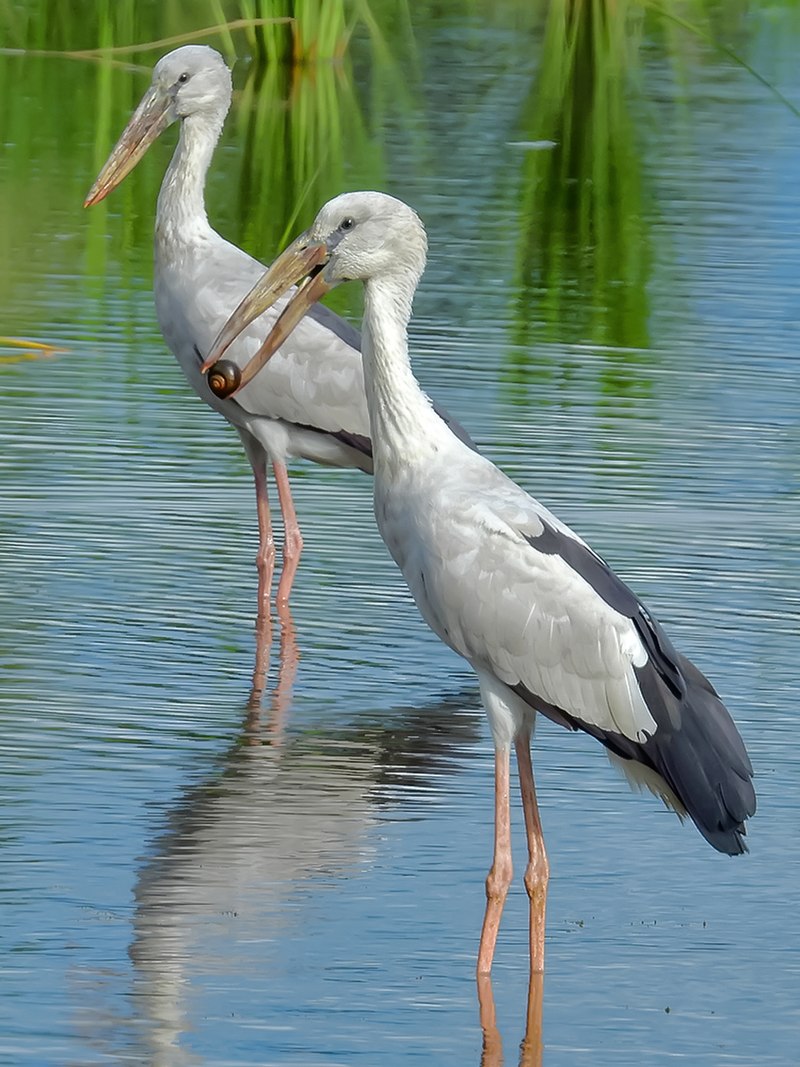
The Asian openbill is a large stork found in the Indian subcontinent and Southeast Asia. It has a greyish or white body, glossy black wings and tail, with an adult having a gap between upper mandible and lower one.
Juveniles don’t have this unique feature but will grow it as they mature.
They feed by wading through shallow water looking for snails, crustaceans and aquatic plants to eat from the surface of mudflats or marshes.
Due to its enormous size (up to 121 cm tall) it makes quite an impressive sight when flying.
Scientific classification:
| Kingdom | Animalia |
| Phylum | Chordata |
| Class | Aves |
| Order | Ciconiiformes |
| Family | Ciconiidae |
| Genus | Anastomus |
| Species | A. oscitans |
Also Featured In: Birds that You’ll Find in Kolkata,
9. Gadwall
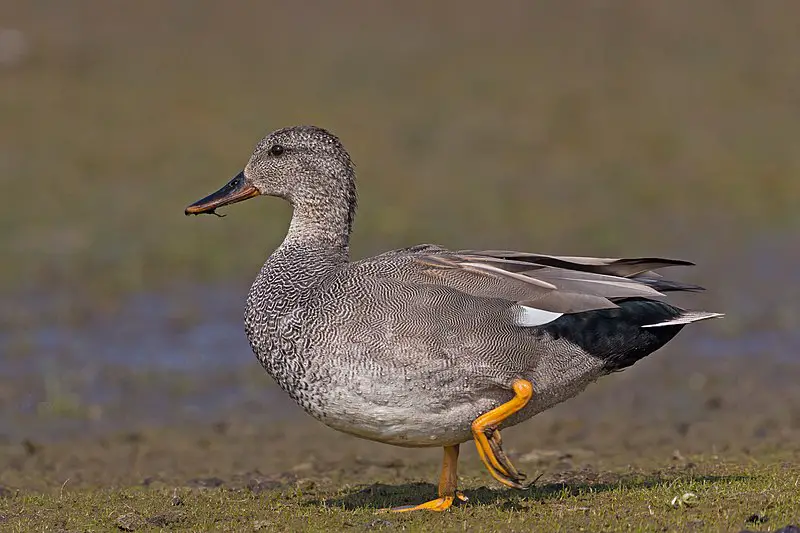
The Gadwall is a species of duck belonging to the Anatidae family. It was first described by Carl Linnaeus in 1758 and DNA studies show that it is closely related to the Falcated Duck, as well as three other Wigeons.
They are quite common and can be found across many parts of North America and Europe.
In terms of appearance, they have light grey bodies with white underbellies, brown wings tipped with black spots, yellowish-orange bills, dark eyes and distinctive chestnut heads which make them easy to identify among other ducks.
They prefer shallow wetlands but also inhabit ponds or lakes during winter migration season where they feed on aquatic plants such as pondweed or water lilies alongside small insects like beetles or dragonflies when available.
Scientific classification:
| Kingdom | Animalia |
| Phylum | Chordata |
| Class | Aves |
| Order | Anseriformes |
| Family | Anatidae |
| Genus | Mareca |
| Species | M. strepera |
Also Featured In: Most Popular Bird Species in North America, Belarus Birds You Should Know
10. Besra
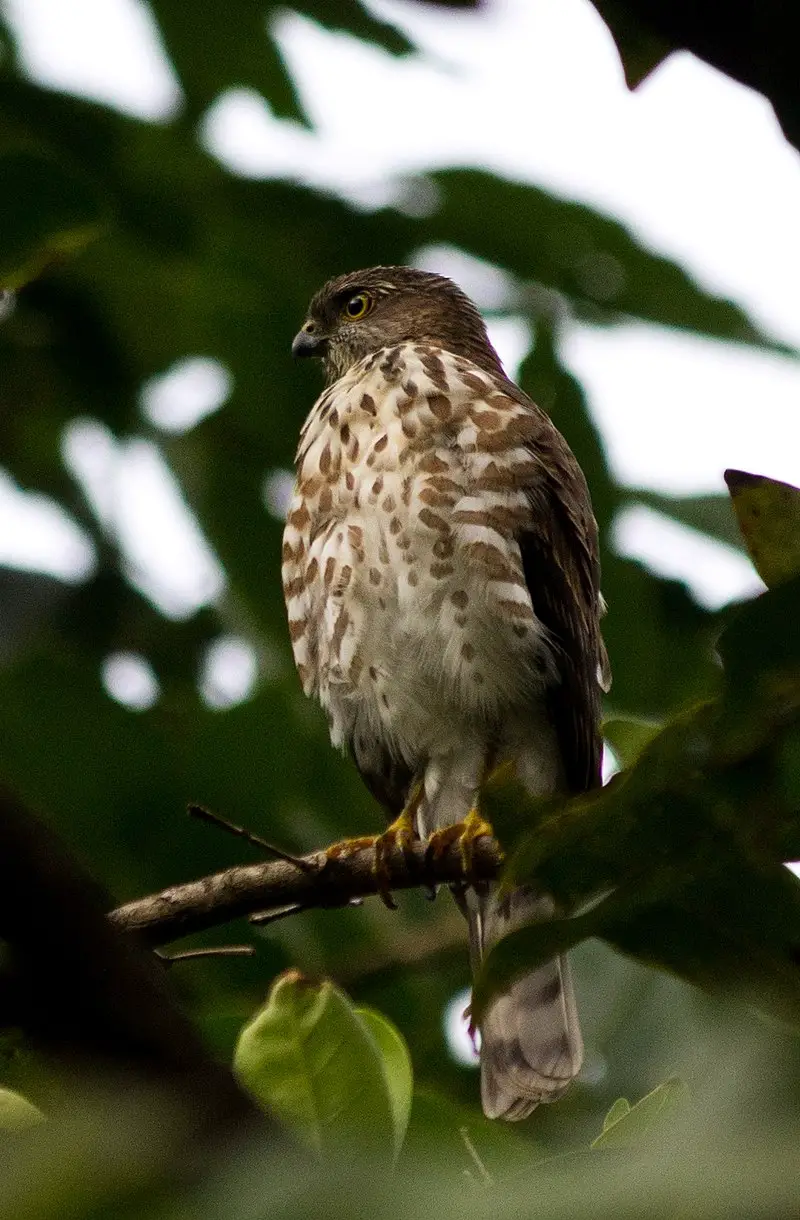
The Besra is a small bird of prey, belonging to the Accipitridae family. It can be found in dense forests across Southern Asia and East Asia.
The besra typically builds new nests each year, usually out of twigs and leaves, laying 2-5 eggs at a time.
Its size ranges from 29 t 40cm long with broad wings for soaring through the air quickly and efficiently when hunting for its food which mainly consists of insects or other small animals like rodents or lizards.
This agile predator uses its sharp vision to locate potential meals both on land as well as water bodies nearby where it may swoop down to catch unsuspecting fish too.Scientific classification:
| Kingdom | Animalia |
| Phylum | Chordata |
| Class | Aves |
| Order | Accipitriformes |
| Family | Accipitridae |
| Genus | Accipiter |
| Species | A. virgatus |
Also Featured In: Beautiful Indonesian Birds, Common Philippines Birds
11. Indian Pond Heron
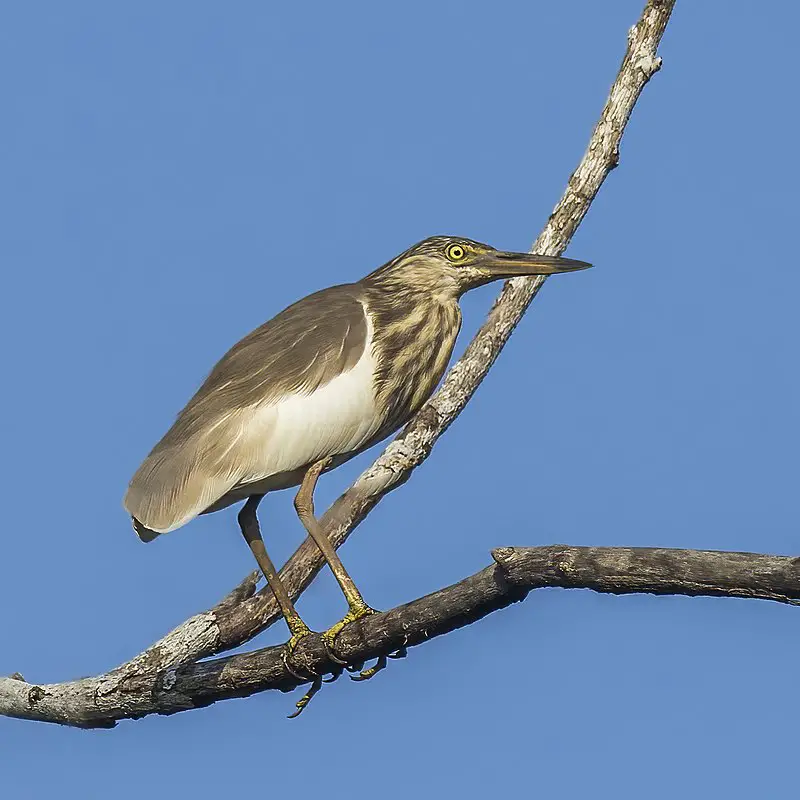
The Indian Pond Heron, also called Paddybird is a small heron found in the Old World. It breeds from southern Iran to India, Burma and Sri Lanka and can be seen near waterbodies or even around human habitations.
These birds are easily recognisable when they take off as their wings make a loud whistling sound due to its long flight feathers which are greyish-brown with white patches on them.
They feed mainly on fish but will eat other aquatic creatures such as frogs and insects too.
During breeding season they construct nests made of reeds close to water bodies where they lay 3–5 eggs at once.
The female incubates the eggs for about 19 days after which both parents share duties of feeding chicks until juveniles become independent enough to fly away.
Scientific classification:
| Kingdom | Animalia |
| Phylum | Chordata |
| Class | Aves |
| Order | Pelecaniformes |
| Family | Ardeidae |
| Genus | Ardeola |
| Species | A. grayii |
Also Featured In: Native Pakistani Birds, Birds of Islamabad
12. White-Eyed Buzzard
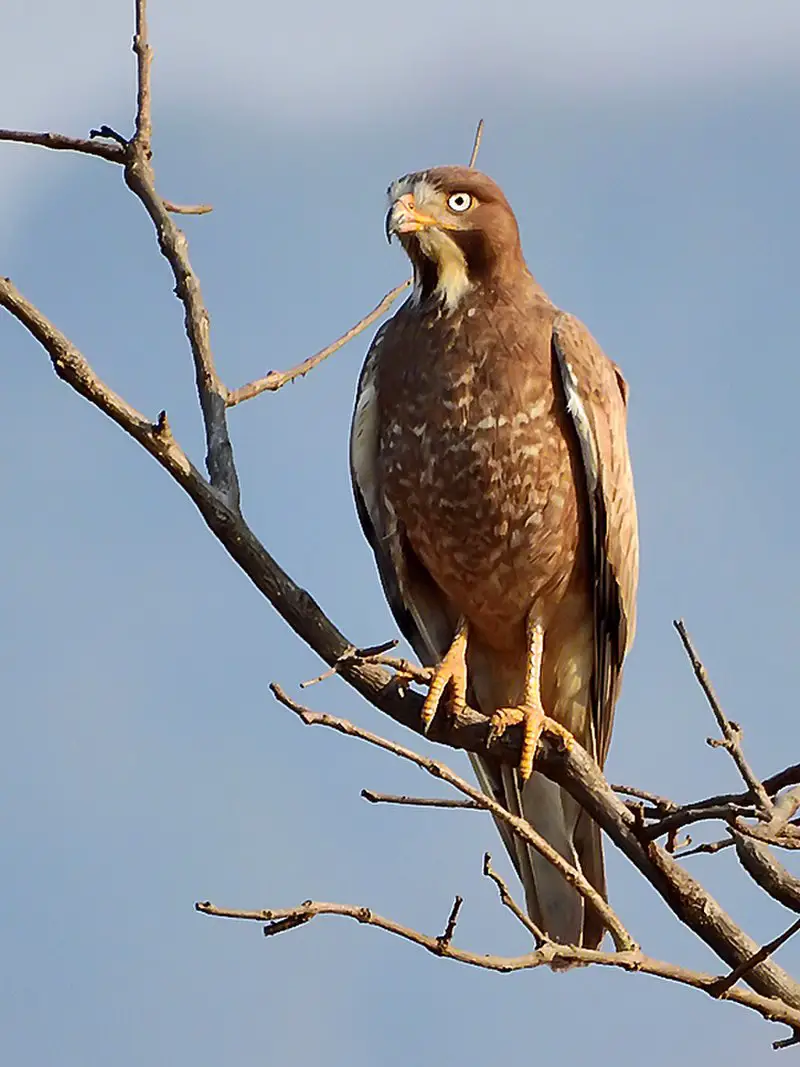
The White-eyed Buzzard is a medium-sized hawk found in South Asia. It has a brown head, rufous tail and distinctive white iris.
Its throat bears a dark mesial stripe bordered by white feathers, while its upper wing holds pale median coverts.
Unlike true buzzards, the underside of their wings don’t have carpal patches.
They feed on small mammals such as rodents and lizards; they also consume snakes and large insects like locusts or grasshoppers.
These birds build stick nests high up in trees for breeding purposes; usually laying one to two eggs at once which are incubated over 4 weeks .
The chicks fledge after about 6 weeks but will stay with their parents until the next breeding season begins when they become independent adults that can live up to 10 years old.
Scientific classification:
| Kingdom | Animalia |
| Phylum | Chordata |
| Class | Aves |
| Order | Accipitriformes |
| Family | Accipitridae |
| Genus | Butastur |
| Species | B. teesa |
Also Featured In: Most Common Birds of Bihar,
13. Cinnamon Bittern
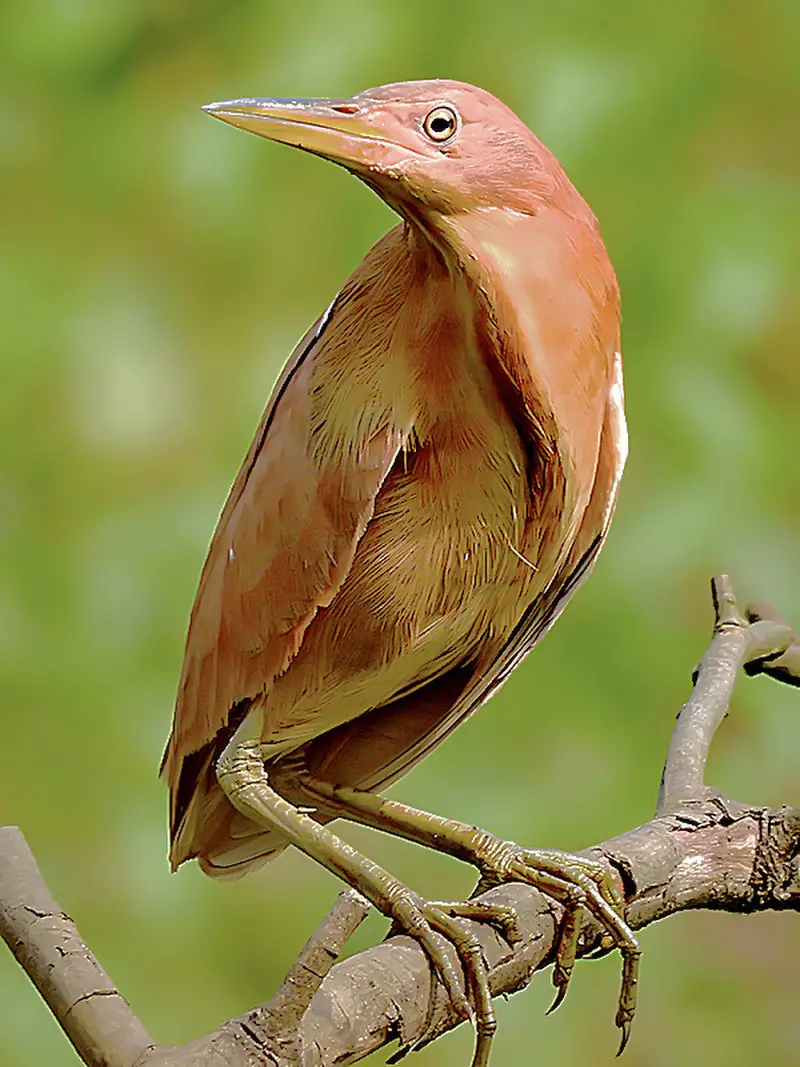
The Cinnamon Bittern is a small Old World bird, found in parts of India, China and Indonesia. It can be identified by its chestnut brown colour on the back and wings with white streaks throughout.
During breeding season it has yellowish-brown plumage on its head neck and breast. Its legs are black which helps distinguish it from other bitterns.
The cinnamon bittern mainly resides in tropical or subtropical climates but some northern birds migrate short distances during winter months for food sources.
They feed mostly on fish, insects, frogs and crustaceans while they breed between April to August making nests near shallow water areas under dense vegetation cover providing safety from predators like snakes or cats that may prey upon them otherwise.
Scientific classification:
| Kingdom | Animalia |
| Phylum | Chordata |
| Class | Aves |
| Order | Pelecaniformes |
| Family | Ardeidae |
| Genus | Ixobrychus |
| Species | I. cinnamomeus |
14. Jacanas
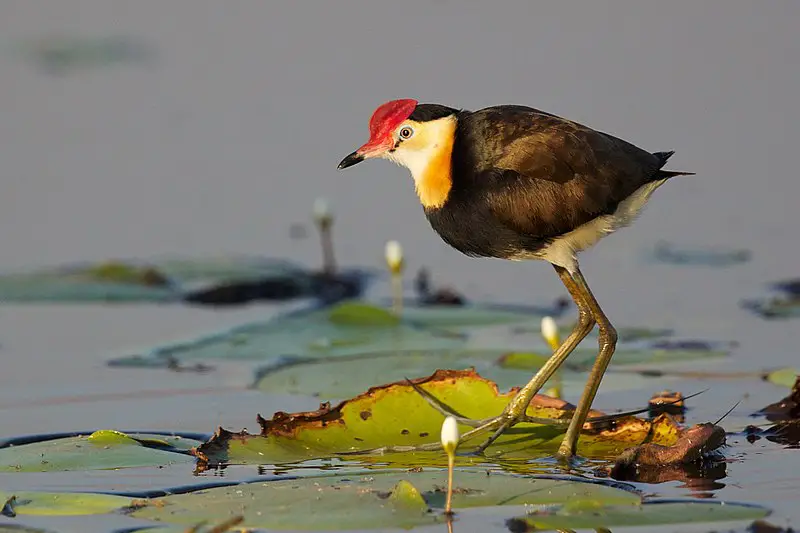
Jacanas are tropical waders belonging to the Jacanidae family. They have distinctive elongated toes and toenails which help them forage on floating or semi-emergent aquatic vegetation.
This adaptation gives them their nickname “Jesus birds” as they seem to be able to walk on water.
The female jacanas are also unique amongst bird species in that they take charge of nest building, incubation and caring for young while males perform courtship displays.
These unusual birds can be found throughout the world’s tropical regions where they inhabit wetlands such as swamps, marshes and shallow lakes with lily pads.
With a wide variety range due their special adaptations these beautiful creatures will surely continue living life at ease around our planet’s warmest waters.
Scientific classification:
| Kingdom | Animalia |
| Phylum | Chordata |
| Class | Aves |
| Order | Charadriiformes |
| Suborder | Thinocori |
| Family | Jacanidae Stejneger, 1885 |
Also Featured In: Beautiful Brazilian Birds, Water Birds Live around Us
15. Northern Storm Petrels
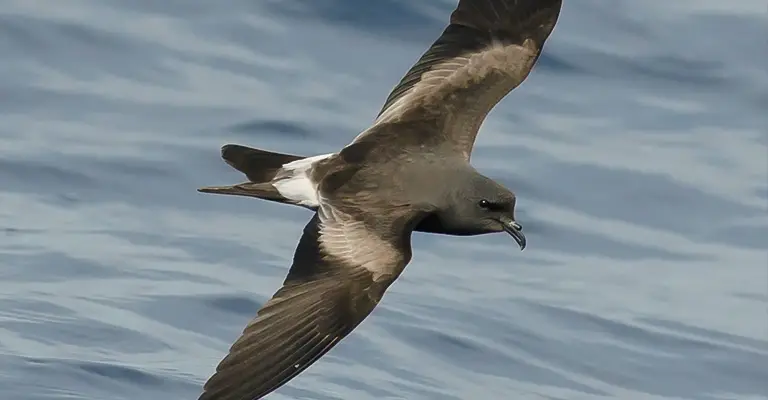
Northern storm petrels are one of the smallest seabirds, inhabiting oceans all over the world.
They have a unique ability to hover over water and pick planktonic crustaceans and small fish from the surface.
Northern storm petrels belong to the genus Hydrobates in family Hydrobatidae, part of Procellariiformes order.
This species was once lumped with austral storm petrel but recent studies show that they weren’t related closely which led them being split into two distinct species now.
These birds can be identified by their dark grey upperparts and wings along with white underparts when seen from afar while feeding on ocean’s surface.
Scientific classification:
| Kingdom | Animalia |
| Phylum | Chordata |
| Class | Aves |
| Order | Procellariiformes |
| Family | Hydrobatidae Mathews, 1912 |
| Genus | Hydrobates F. Boie, 1822 |
Also Featured In: Birds You’ll Find in the Sea, Birds of Sweden
16. Bee-Eater
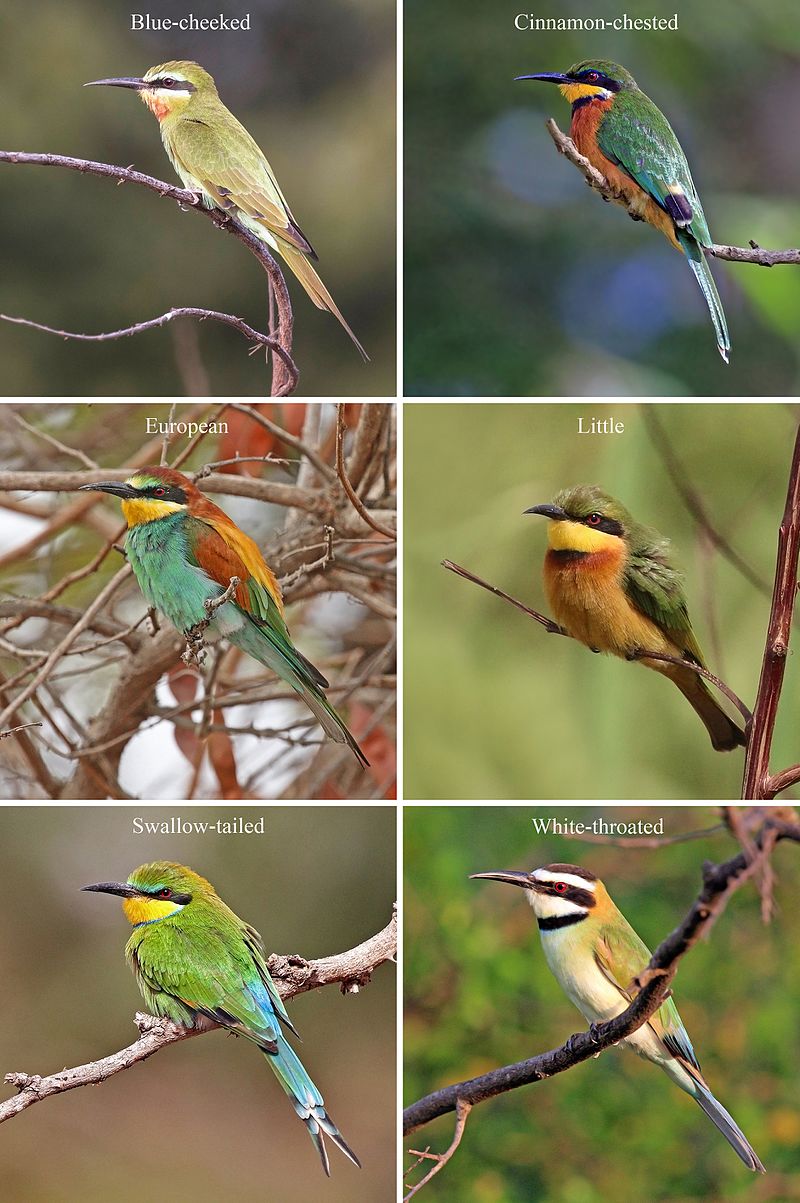
Bee-eaters are one of the most beautiful and vibrant birds in existence. They have a slender body, long wings, down turned bills and their signature elongated central tail feathers which make them instantly recognizable from afar.
Their plumage is incredibly colorful with many shades ranging from blues to greens to reds that glisten when they fly through the air.
These stunning creatures can be found all over Africa, Asia, Southern Europe, Australia and New Guinea where they feed mainly on bees but also other insects like flies or wasps as well as small mammals such as lizards or rodents.
Bee-eaters live in colonies near rivers or wetlands so that they may easily hunt for food while staying close together for safety purposes.
Additionally it allows them to better display their impressive courtship dances during mating season.
Scientific classification:
| Kingdom | Animalia |
| Phylum | Chordata |
| Class | Aves |
| Order | Coraciiformes |
| Family | Meropidae Rafinesque, 1815 |
Also Featured In: Common Nigerian Birds, Turkey Birds You Should Know
17. Darters
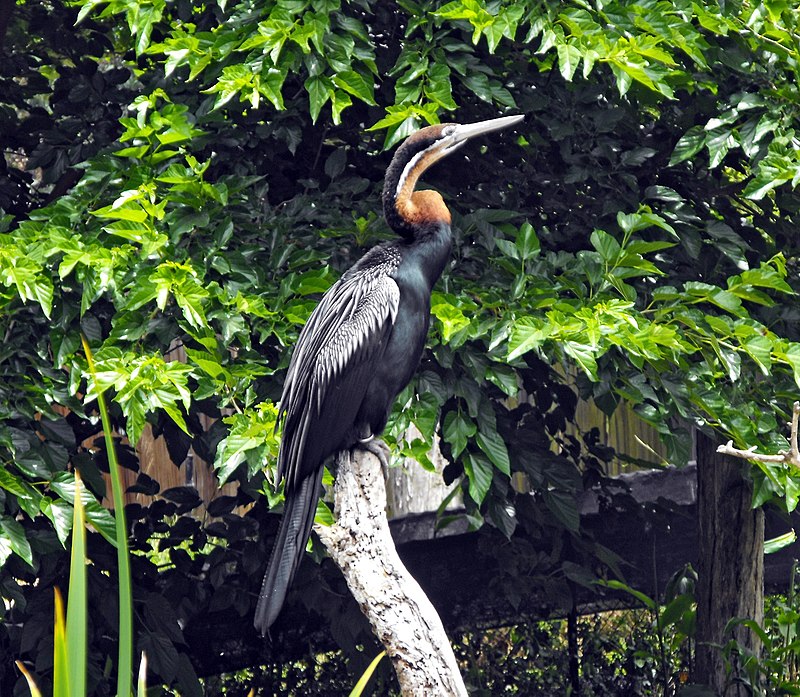
Darters are tropical waterbirds from the family Anhingidae, which includes four species. Three of these species are common and found in multiple locations while one is rarer and classified as near-threatened by IUCN.
Their most notable feature is their long neck which they use to dive into shallow waters for prey such as fish or frogs.
They have a slim body with large wings allowing them to soar high in the sky at great speeds making it difficult for predators to catch them during flight.
Darters also make regular visits to land where they bask in the sun on tree branches or rocky outcroppings.
These birds can be easily identified by their dark feathers, yellowish eyes, and orangey beak – all features that help distinguish them from other birds of similar size and coloration.
Scientific classification:
| Kingdom | Animalia |
| Phylum | Chordata |
| Class | Aves |
| Order | Suliformes |
| Family | Anhingidae Reichenbach, 1849[1] |
| Genus | Anhinga Brisson, 1760 |
Also Featured In: Most Common Types of Bangladeshi Birds, South Australian Birds
18. Brahminy Kite
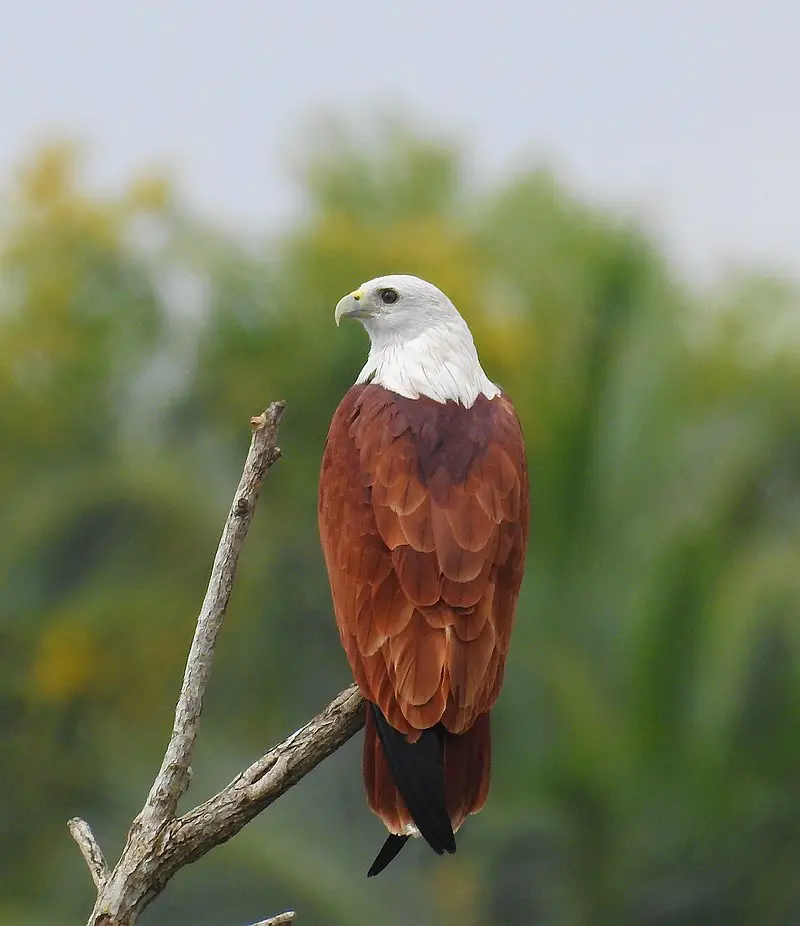
The Brahminy Kite is a majestic bird of prey native to the Indian subcontinent, Southeast Asia and Australia. It was formerly known as the red-backed sea eagle in Australia.
This medium-sized raptor has a distinctive white head with rufous brown feathers covering its body, making it easily recognisable from far away. The wingspan can reach up to 5 feet wide.
Brahminy kites are found mainly on coasts and inland wetlands where they feed mostly on dead fish or carrion left by other animals.
They also hunt for small mammals such as rodents or reptiles like lizards and snakes during dry spells when food sources become scarce.
These birds have adapted well over time and will even scavenge for food near picnic sites or urban areas if need be.
Overall these beautiful creatures are an important part of their local ecosystems which rely heavily upon them for keeping animal populations balanced through natural predation methods instead of manmade ones; this ensures that nature remains healthy so future generations may enjoy it too.
Scientific classification:
| Kingdom | Animalia |
| Phylum | Chordata |
| Class | Aves |
| Order | Accipitriformes |
| Family | Accipitridae |
| Genus | Haliastur |
| Species | H. indus |
Also Featured In: Birds that Live around Brisbane, Birds that Charles Darwin Studied
19. Vernal Hanging Parrot
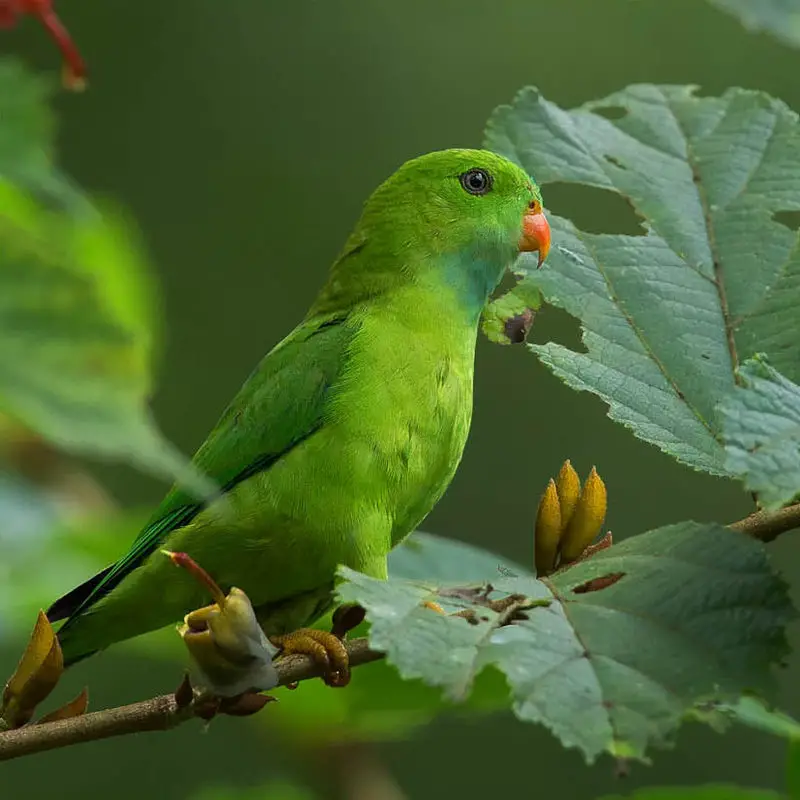
The Vernal hanging parrot is a small, colourful bird native to the Indian subcontinent and parts of Southeast Asia. It has bright green feathers with black edging above its wings and tail, while its chest and belly are yellow-green in colour.
They feed mainly on fruit, seeds, buds and blossoms which they find by frequenting banyan trees for their fruits as well as plantain trees for nectar from flowers.
Although it typically stays within one area throughout the year there have been occasions where this species will move around due to changes in food availability or seasonality.
As such these birds can be found across various habitats including forests, woodlands and urban areas too.
Scientific classification:
| Kingdom | Animalia |
| Phylum | Chordata |
| Class | Aves |
| Order | Psittaciformes |
| Family | Psittaculidae |
| Genus | Loriculus |
| Species | L. vernalis |
Also Featured In: Birds of Konkan, Pet Birds that Live in India
20. Lesser Adjutant
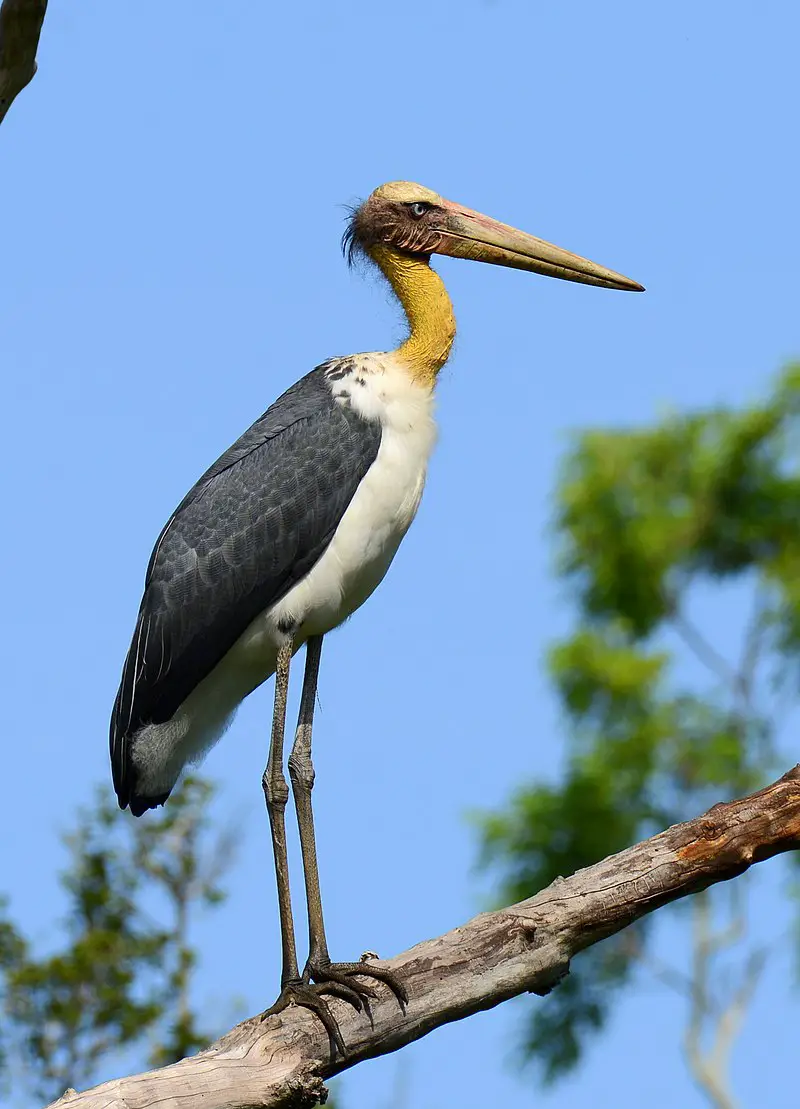
The Lesser Adjutant is a large wading bird found in the stork family Ciconiidae. It has an unmistakable profile, with its bare neck and head distinguishing it from other species of its genus.
This impressive bird is solitary in nature, preferring to live near wetland habitats where it can feed on fish, frogs and insects that inhabit these areas.
The Lesser Adjutant lives all over India as well as Southeast Asia into Java making them a widespread species.
They are also less likely scavengers than their larger counterpart –the Greater Adjutant Bird -making them more unique amongst their peers.
Not only do they possess this interesting trait but due to their size and ability to fly long distances they play an important role within local ecosystems across Asia keeping things balanced and healthy for future generations.
Scientific classification:
| Kingdom | Animalia |
| Phylum | Chordata |
| Class | Aves |
| Order | Ciconiiformes |
| Family | Ciconiidae |
| Genus | Leptoptilos |
| Species | L. javanicus |
Also Featured In: Java Birds You Should Know,
21. Grey Heron
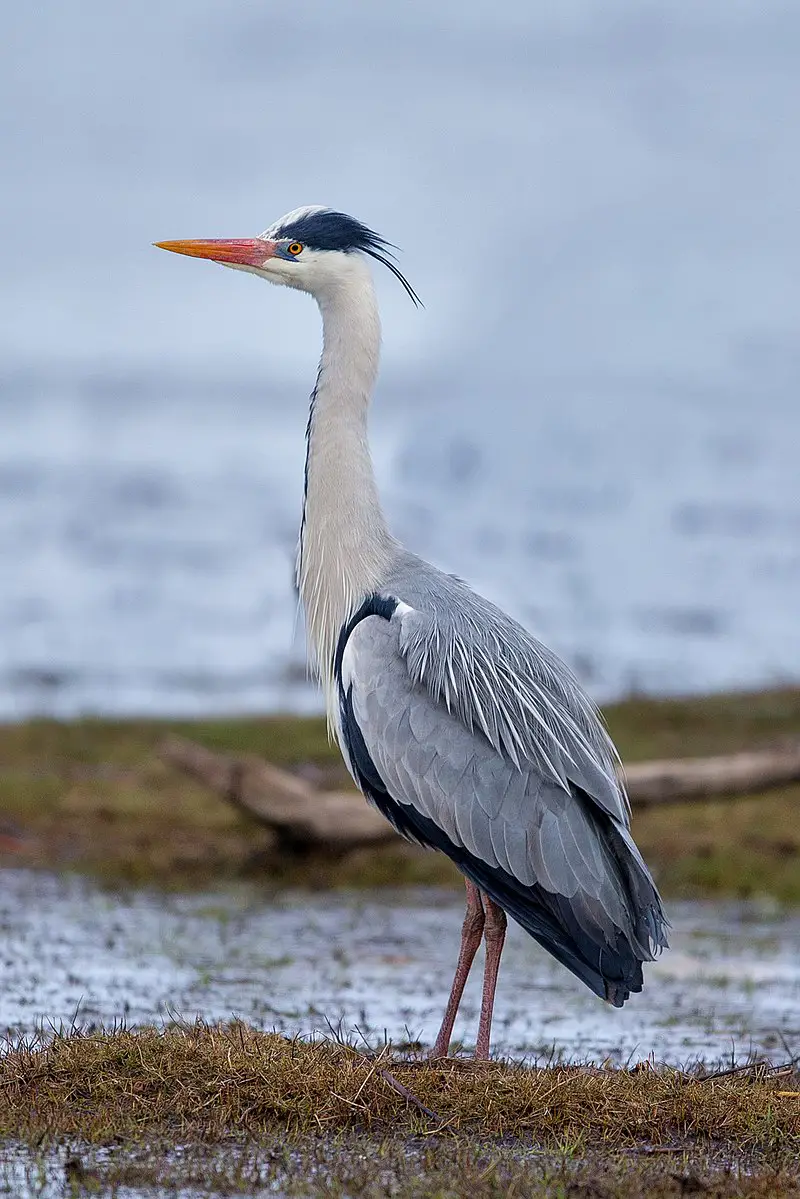
The grey heron is a majestic bird found in temperate regions of Europe, Asia and parts of Africa. It has long legs to wade through the shallow waters where it feeds on aquatic creatures such as frogs, fish and insects.
In wintertime some migrate southwards but others stay put in their natural habitats; lakes, rivers and marshes. They can also be spotted near coasts or along estuaries.
Grey Herons have beautiful blue-grey feathers and an impressive wingspan that makes them stand out from other birds when they soar gracefully across the sky.
These graceful creatures are not only easy on the eye but wise hunters too.
Scientific classification:
| Kingdom | Animalia |
| Phylum | Chordata |
| Class | Aves |
| Order | Pelecaniformes |
| Family | Ardeidae |
| Genus | Ardea |
| Species | A. cinerea |
Also Featured In: Common Birds in Japan, Most Common Romanian Birds
22. Frogmouth
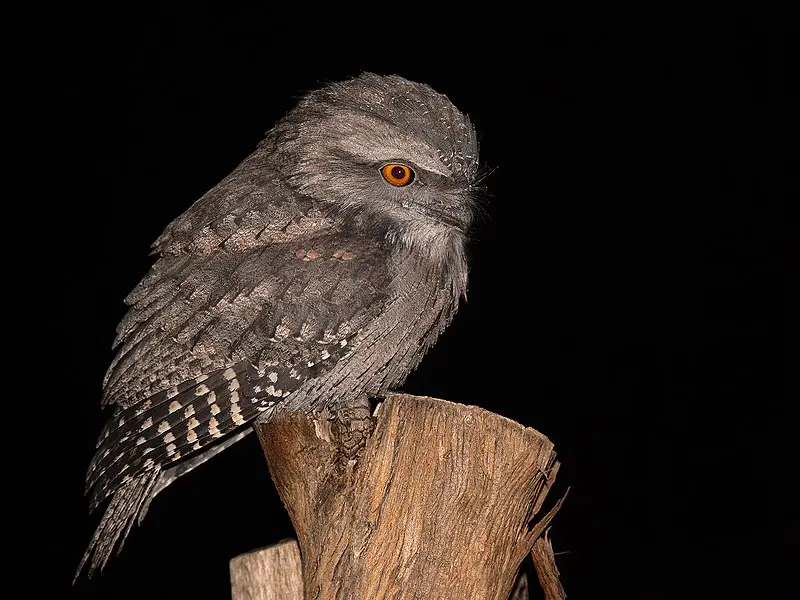
The Frogmouth is a nocturnal bird that belongs to the same family as owlet-nightjars, swifts and hummingbirds.
They have large flattened hooked bills with huge frog-like gape which helps them capture insects during night time.
Three species of Podargus are found in Australia and New Guinea only – they have massive eyes that allow for excellent night vision.
Their bodies are generally grey or brownish in colour with cryptic markings for camouflage when roosting during day light hours.
Generally known as quiet birds, their loud wailing call can be heard at dusk or dawn near river banks or wetlands where they live alone or form pairs throughout breeding season.
The diet of these fascinating creatures consists mainly of flying insects such as moths, beetles & cicadas etc., but on occasion will consume small vertebrates like lizards and frogs too.
Scientific classification:
| Kingdom | Animalia |
| Phylum | Chordata |
| Class | Aves |
| Clade | Strisores |
| Order | Podargiformes Matthews, 1918 |
| Family | Podargidae Gray, 1847 |
Also Featured In: Birds of the Philippines, Asian Birds
23. Pittas
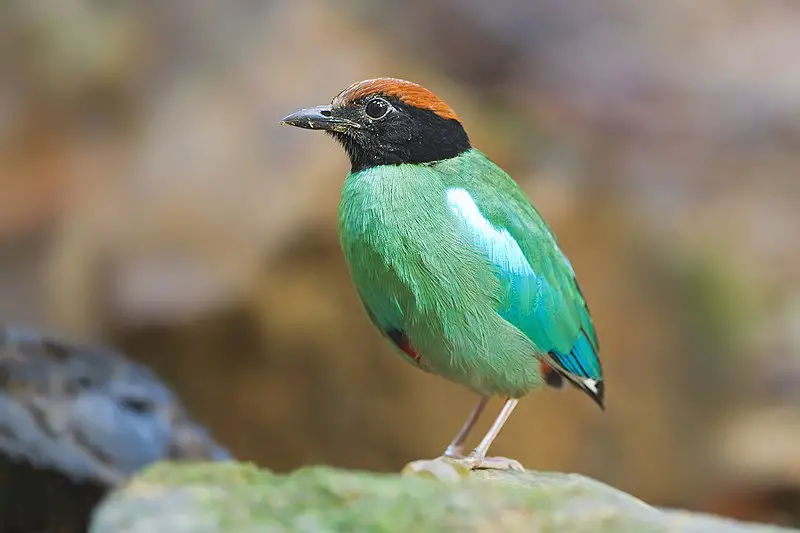
Pittas are a family of passerine birds known for their vibrant colors and unique appearance. They can be found in Asia, Australasia and Africa with around 40 to 42 species existing today.
These Old World suboscines have closest relatives among other bird genera such as Smithornis and Calyptomena.
Pittas inhabit tropical forests where they hop from branch to branch searching for insects or worms on the ground below them.
Their feathers are stunningly colored with combinations of blue, green, copper, purple or even yellow making them stand out amongst others in the forest canopy.
Scientific classification:
| Kingdom | Animalia |
| Phylum | Chordata |
| Class | Aves |
| Order | Passeriformes |
| Suborder | Tyranni |
| Infraorder | Eurylaimides |
| Superfamily | Pittoidea |
| Family | Pittidae Authority disputed.[a] |
Also Featured In: Birds that Live in Borneo Island, Birds that Found in Sumatra
24. Blue-Tailed Bee-Eater
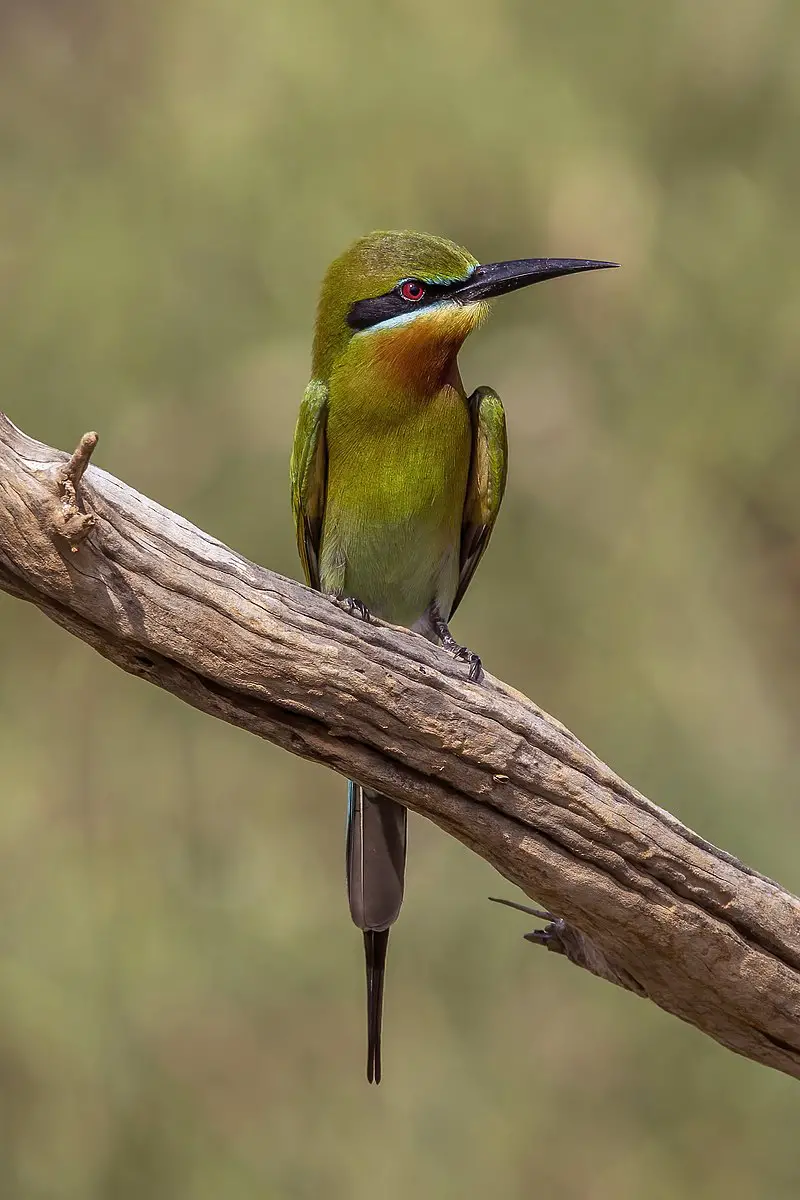
The Blue-tailed Bee-eater is a stunning bird found in South and Southeast Asia. This vibrant species has an iridescent blue tail, green back, yellow chest and white throat that stands out against the bright sky.
It feeds mainly on bees, wasps and other flying insects which it catches using its sharp beak while swooping through the air with remarkable agility.
The bee-eater typically nests by tunneling into loamy sand banks near rivers or streams to create burrows for their eggs.
During migration season they are often seen in large flocks soaring gracefully across the landscape seeking food sources before settling down in colonies during breeding season.
With its beautiful colours and graceful flight this impressive avian beauty captivates anyone lucky enough to see it up close.
Scientific classification:
| Kingdom | Animalia |
| Phylum | Chordata |
| Class | Aves |
| Order | Coraciiformes |
| Family | Meropidae |
| Genus | Merops |
| Species | M. philippinus |
Also Featured In: Birds that Migrate to Sri Lankan, Birds That Live In Phuket Island
25. Hoopoes
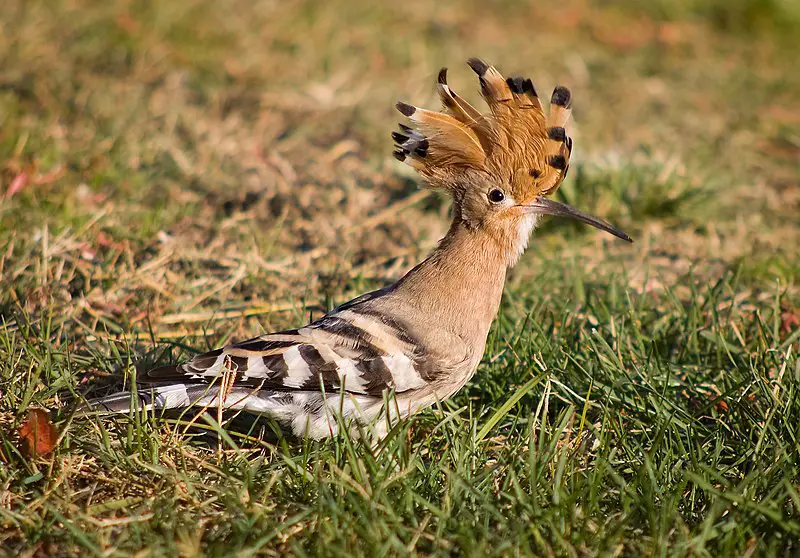
Hoopoes are a fascinating species of bird, found across Africa, Asia and Europe. They have beautiful plumage with unique ‘crowns’ of feathers on their heads.
Three living and one extinct species exist – although for some time they were all classed as the same species: Upupa epops. Some taxonomists still believe this to be true.
These birds are often associated with royalty due to the impressive crown-like crest atop their head, adding an extra element of mystery and exoticism to these creatures.
Hoopoes can also produce loud calls which sound like “hoo-poo” hence why they’ve been given such an apt name.
Scientific classification:
| Kingdom | Animalia |
| Phylum | Chordata |
| Class | Aves |
| Order | Bucerotiformes |
| Family | Upupidae Leach, 1820 |
| Genus | Upupa Linnaeus, 1758 |
Also Featured In: Egyptian Birds, Italian Birds You Should Know
26. Spoonbills
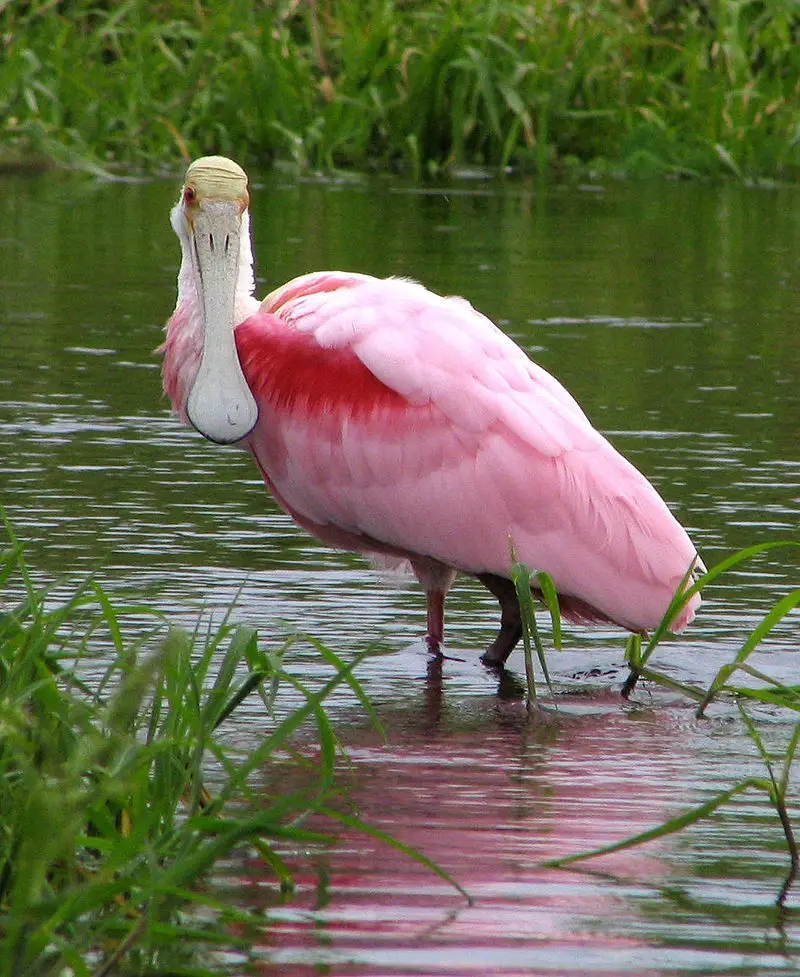
Spoonbills are large wading birds belonging to the genus Platalea. Characterized by their long legs and distinctive spoon-shaped beaks, these birds can be found all over the world except Antarctica.
The name of this genus derives from Ancient Greek meaning “broad”, referring to their bill’s shape.
There are six species of Spoonbill recognized – though they usually form a single group, sometimes it is divided into three genera.
These graceful creatures feed mainly on small aquatic organisms such as insects and fish which they catch with an open-mouth technique while sweeping through shallow waters in search for food.
They typically breed near water bodies during springtime when there’s plenty of food available around them.
Scientific classification:
| Kingdom | Animalia |
| Phylum | Chordata |
| Class | Aves |
| Order | Pelecaniformes |
| Family | Threskiornithidae |
| Subfamily | Plataleinae |
| Genus | Platalea Linnaeus, 1758 |
Also Featured In: Birds of South African, Birds Found in Hungary
27. Black-Headed Ibis
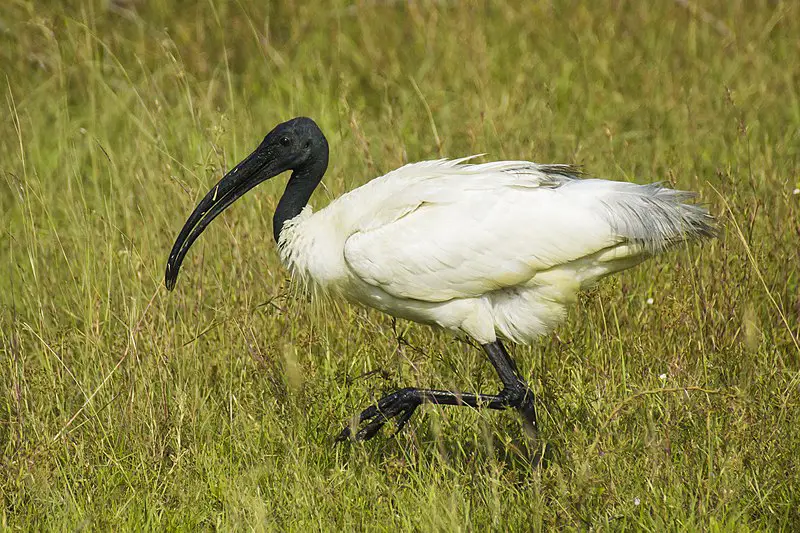
The Black-headed ibis is a majestic wading bird that can be found in areas of South and Southeast Asia, stretching from India to Japan.
It has an overall white plumage, with the most striking feature being its distinctive black neck.
These birds feed mainly on aquatic insects, small fish and frogs which they catch while walking slowly along shallow waters or sweeping their bill through them. They also eat worms, lizards and snails as well as some vegetation such fruits, grains etc..
Despite their wide range across different regions within South/Southeast Asia due to human activities like urbanisation and agricultural expansion.
This species’ population is decreasing at alarming rates making it critically endangered in certain parts of its natural habitat.
Scientific classification:
| Kingdom | Animalia |
| Phylum | Chordata |
| Class | Aves |
| Order | Pelecaniformes |
| Family | Threskiornithidae |
| Genus | Threskiornis |
| Species | T. melanocephalus |
Also Featured In: Birds of Myanmar, Black And White Birds You Don’t Know About
28. Greater Adjutant
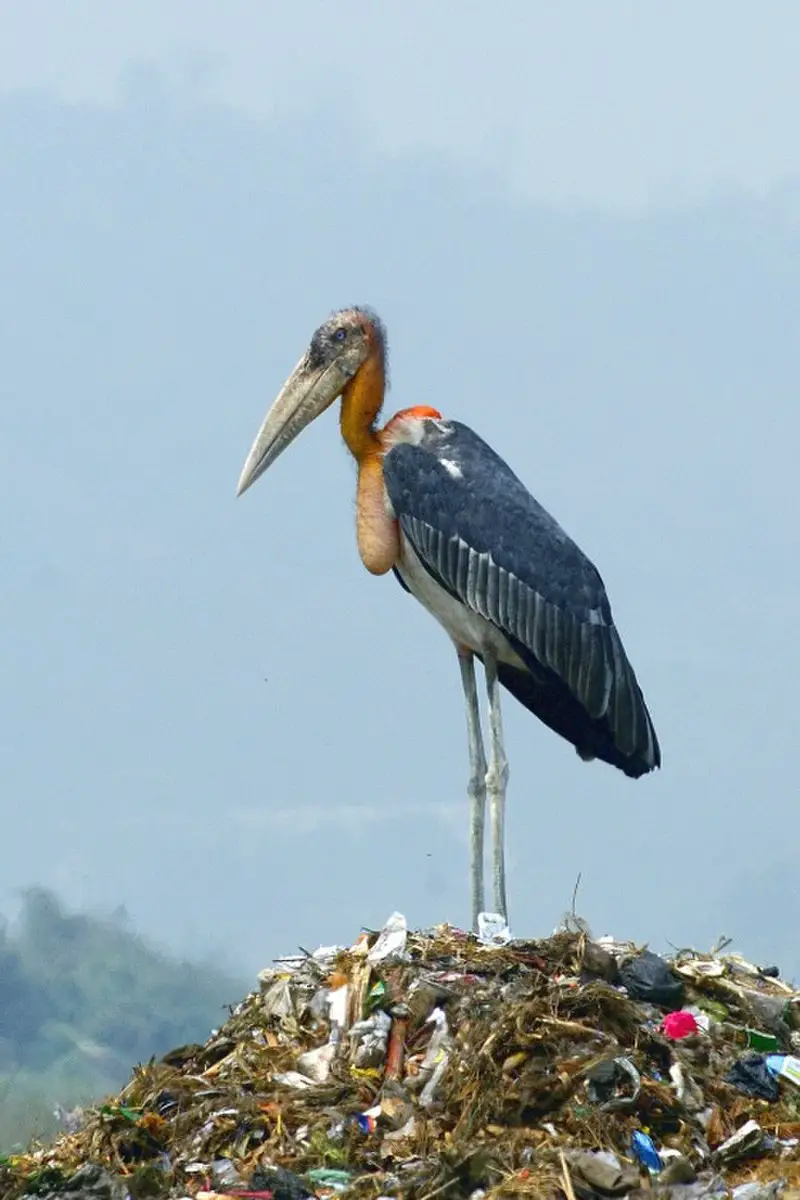
The Greater Adjutant is a majestic member of the stork family, Ciconiidae. It was once found in wide regions across southern and mainland Southeast Asia but now only three breeding populations remain – two in India with the largest colony being located in Assam and another smaller one on an island off Myanmar.
The bird has blackish-grey plumage which stands out against its white shoulder patches giving it a distinctive appearance.
Its large bill gives it an impressive look befitting its size as this species can reach up to 1 metre tall.
Despite their formidable presence, these birds are highly vulnerable due to their small population numbers making them critically endangered.
Conservation efforts such as habitat protection must continue if we are to ensure that future generations will get to admire this beautiful bird for many years yet to come.
Scientific classification:
| Kingdom | Animalia |
| Phylum | Chordata |
| Class | Aves |
| Order | Ciconiiformes |
| Family | Ciconiidae |
| Genus | Leptoptilos |
| Species | L. dubius |
Also Featured In: Common Birds of Jharkhand,
29. Crested Serpent Eagle
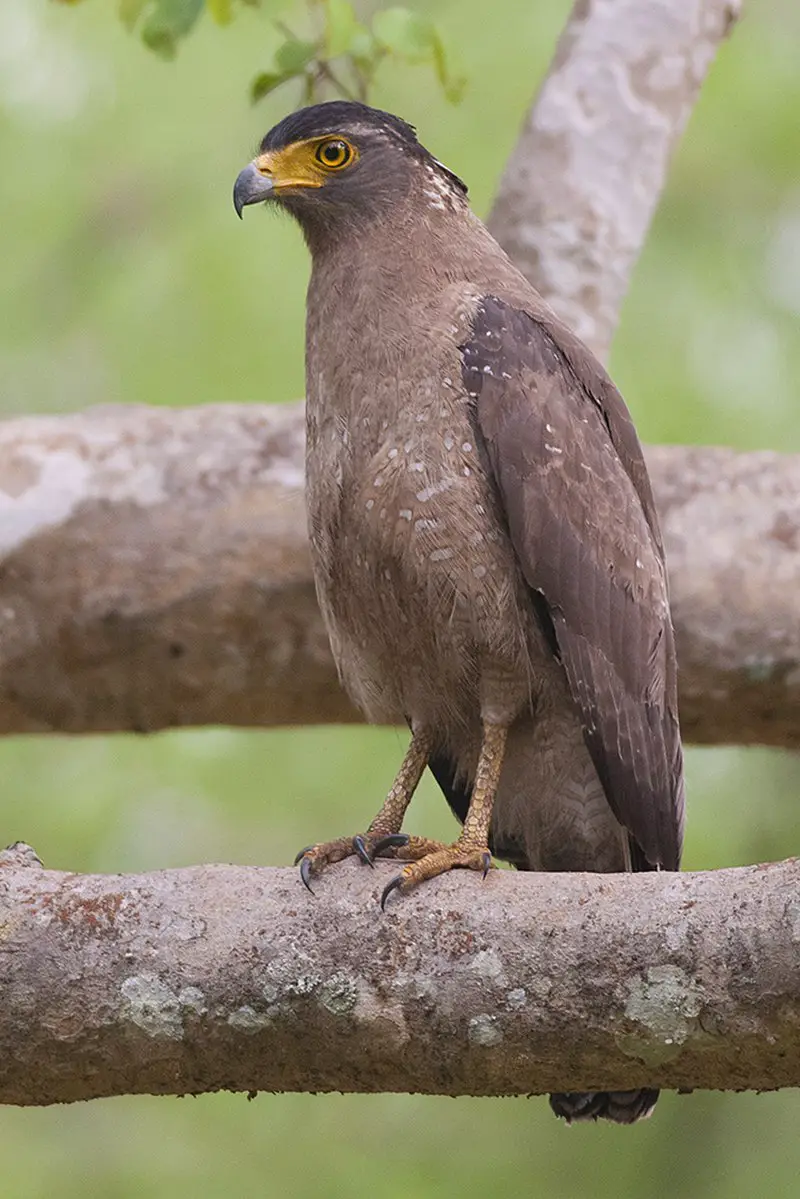
The Crested serpent eagle is a majestic bird of prey found across tropical Asia. With its prominent black and white crest, this medium-sized raptor can be seen soaring above forests in search of food.
It has an extensive range which includes the Indian Subcontinent, Southeast Asia and East Asia; some experts even argue that certain subspecies should be treated as separate species altogether.
This magnificent creature feeds on small animals such as lizards or rodents but will occasionally take larger birds or mammals if it gets the chance.
The Crested serpent eagle remains one of nature’s most impressive creatures to behold.
Scientific classification:
| Kingdom | Animalia |
| Phylum | Chordata |
| Class | Aves |
| Order | Accipitriformes |
| Family | Accipitridae |
| Genus | Spilornis |
| Species | S. cheela |
Also Featured In: Common Birds Found near Ishigaki, Birds Live In Koh Kood
30. Crested Honey Buzzard
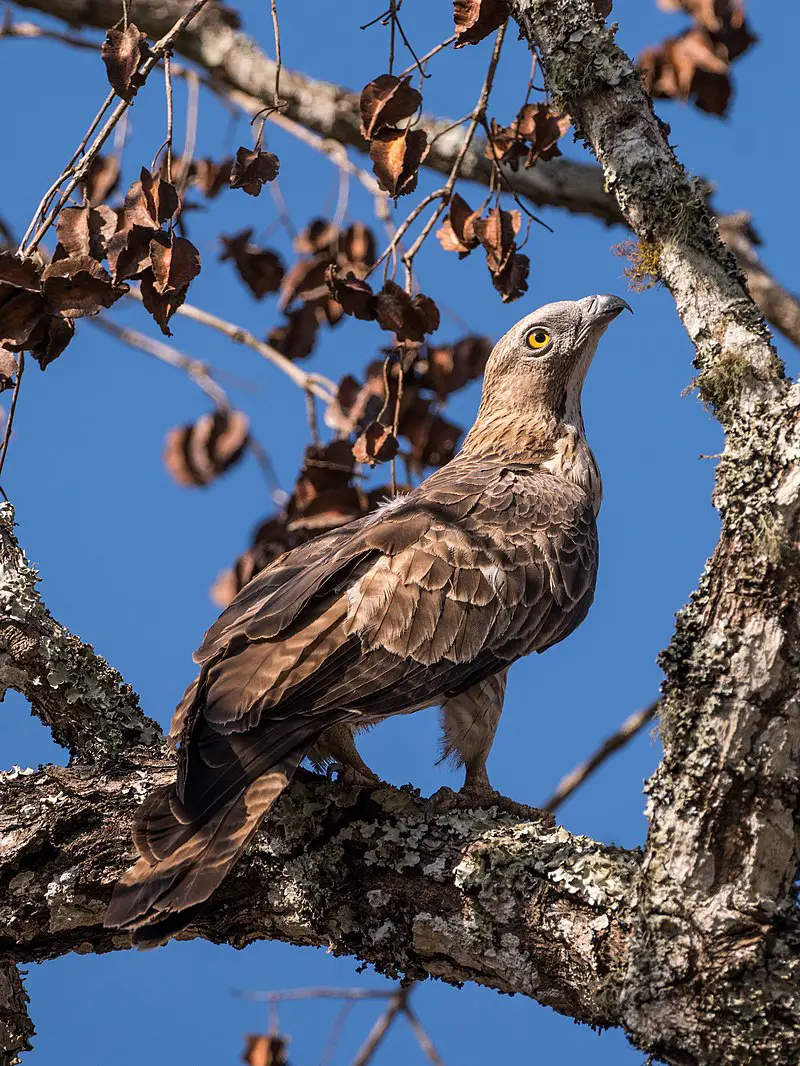
The Crested Honey Buzzard is a medium-sized raptor found in the family Accipitridae. They measure between 57 and 60 cm, making them one of the smaller birds of prey.
It is also referred to as Oriental, Asiatic or Eastern Honey Buzzard due to its wide range across Asia.
These buzzards have six subspecies with distinct features such as white tail tip feathers on some species while others have brownish black wings and bodies that are either grey or chestnut coloured.
Their diet consists mainly of honeybees, wasps and other insects which they hunt using their sharp vision along with swift flight speed reaching up to 70 km/h during migrations.
The Crested Honey Buzzard plays an important role within their ecosystem by controlling populations of insect pests which can be harmful for our environment if left unchecked.Scientific classification:
| Kingdom | Animalia |
| Phylum | Chordata |
| Class | Aves |
| Order | Accipitriformes |
| Family | Accipitridae |
| Genus | Pernis |
| Species | P. ptilorhynchus |
Also Featured In: Native South Korean Birds,
31. Coraciiformes
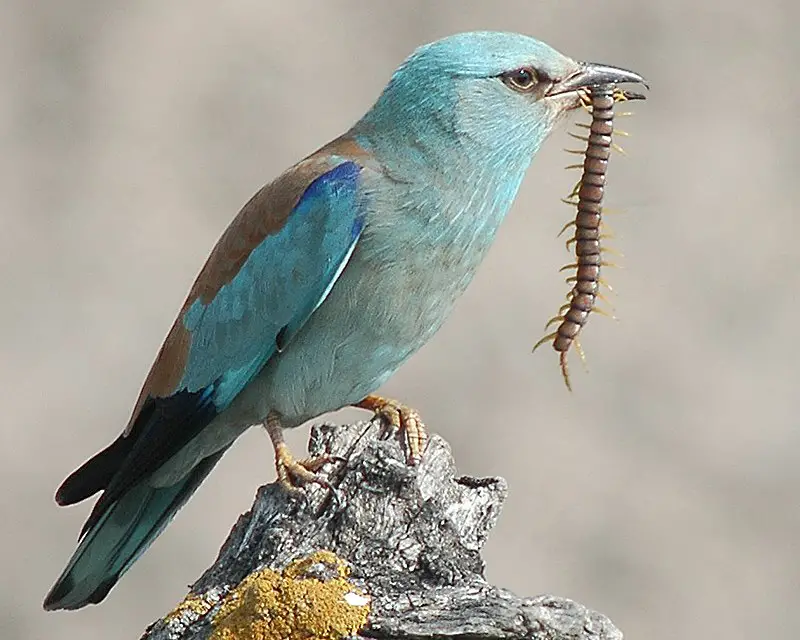
Coraciiformes birds are a group of beautiful and vibrant species, including kingfishers, bee-eaters, rollers, motmots and todies. They have syndactyly feet with three forward pointing toes (with their third and fourth fused at the base).
However in some kingfisher species one toe is absent. This order of bird has an interesting behavior known as ‘slamming’ which links them all together.
These amazing creatures can be seen across many parts of the world from forests to deserts.
Their colorful feathers make them stand out amongst other birds making sure they don’t go unnoticed.Scientific classification:
| Kingdom | Animalia |
| Phylum | Chordata |
| Class | Aves |
| Clade | Picodynastornithes |
| Order | Coraciiformes Forbes, 1884 |
Also Featured In: Birds of Argentina, Bulgarian Birds
32. Buttonquail
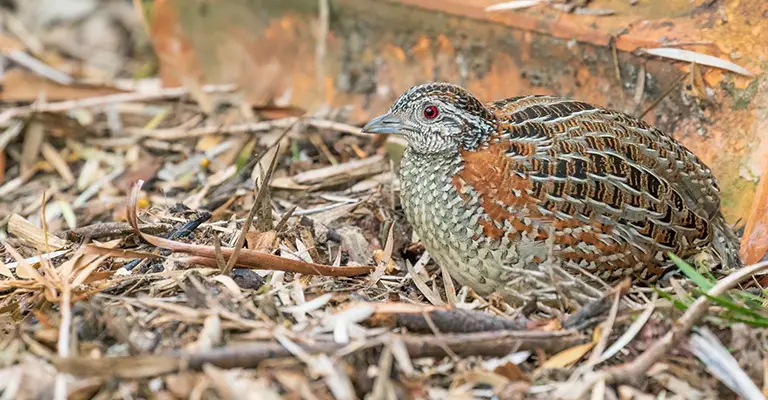
Buttonquails are small, terrestrial birds belonging to the family Turnicidae. They can be found in warm grasslands of Asia, Africa, Europe and Australia.
There are 18 species found across two genera; most being placed under the genus Turnix with a single species known as Ortyxelos.
These birds share a superficial resemblance to quail from Phasianidae but lack any close relation.
Buttonquails avoid flying and instead prefer running on their short legs for navigational purposes.
In terms of physicality they have drab colouring which comprises mostly browns or greys whilst sporting distinctive white patches around their eyes making them easy to identify within dense foliage areas where they usually hide away during times of danger or distress.Scientific classification:
| Kingdom | Animalia |
| Phylum | Chordata |
| Class | Aves |
| Order | Charadriiformes |
| Family | Turnicidae GR Gray, 1840 |
Also Featured In: Birds of Morocco, Birds that Live around Victoria
33. Striated Heron
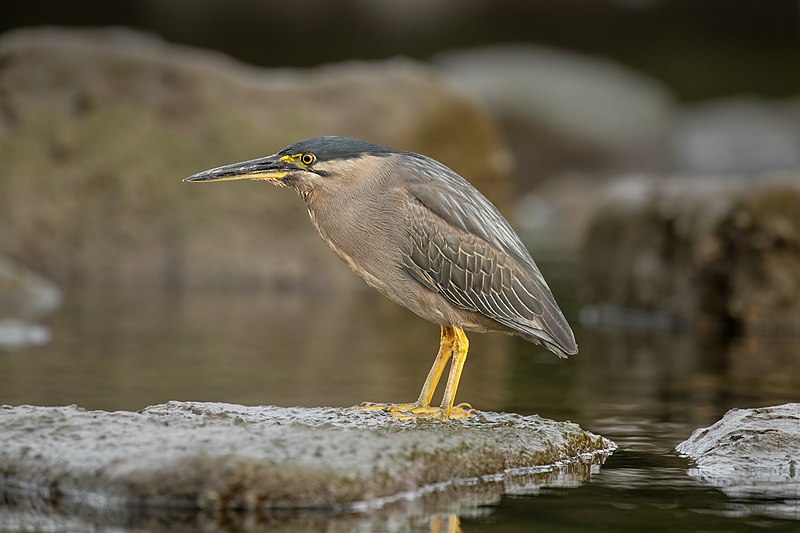
Striated herons are a small species of heron, measuring around 44cm tall. They can be found in wetland areas across the Old World tropics, from west Africa to Japan and Australia as well as South America and the Caribbean.
Striated herons have some interesting behavioral traits that make them unique; they’re mostly sedentary birds who tend to stay close to their breeding habitats throughout most of the year.
During breeding season these little green-backed herons become more active, often performing courtship dances in order to attract mates before nesting together on nearby trees or shrubs.Scientific classification:
| Kingdom | Animalia |
| Phylum | Chordata |
| Class | Aves |
| Order | Pelecaniformes |
| Family | Ardeidae |
| Genus | Butorides |
| Species | B. striata |
Also Featured In: Beautiful Malaysian birds, Rainforest Birds You Should Know
34. Malabar Pied Hornbill
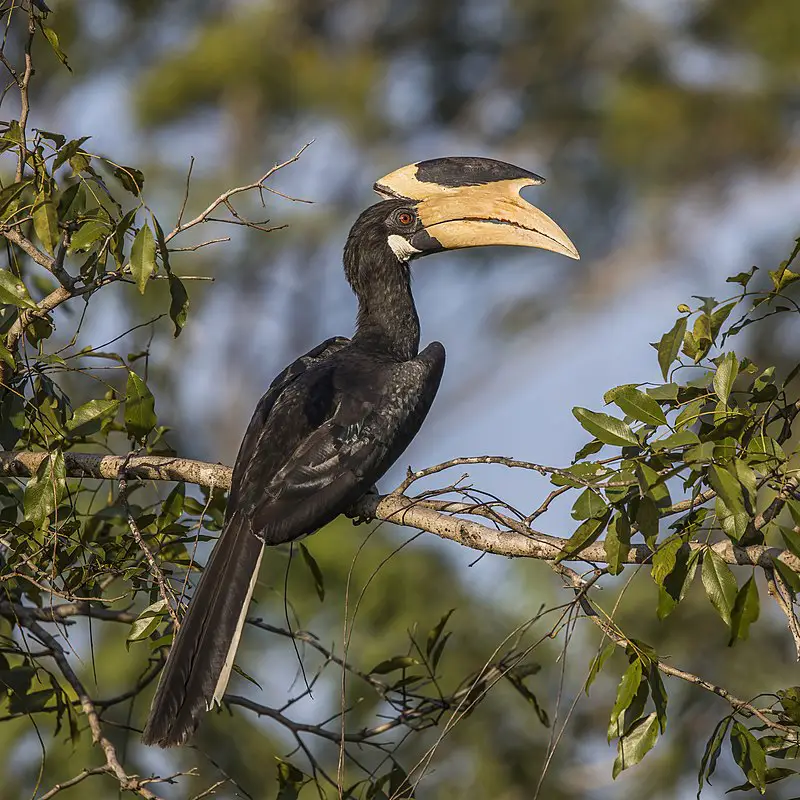
The Malabar pied hornbill is an incredible bird found in the Old World. It has a unique appearance due to its black and white colouration, with a large yellow beak that curves downwards at the tip.
This species was first described by Georges-Louis Leclerc, Comte de Buffon in 1780 and illustrated in his Histoire Naturelle des Oiseaux book.
The diet of this bird consists mainly of fruit, small reptiles and insects which they catch while flying through trees or on the ground during their daily activities.
They have been known to form monogamous bonds within pairs over long periods of time as well as being highly social creatures living together in flocks for protection against predators such as snakes and raptors.
Overall, these birds are fascinating creatures with amazing adaptations that allow them to survive even under difficult environmental conditions.Scientific classification:
| Kingdom | Animalia |
| Phylum | Chordata |
| Class | Aves |
| Order | Bucerotiformes |
| Family | Bucerotidae |
| Genus | Anthracoceros |
| Species | A. coronatus |
Also Featured In: Birds in Sri Lanka,
35. Western Reef Heron
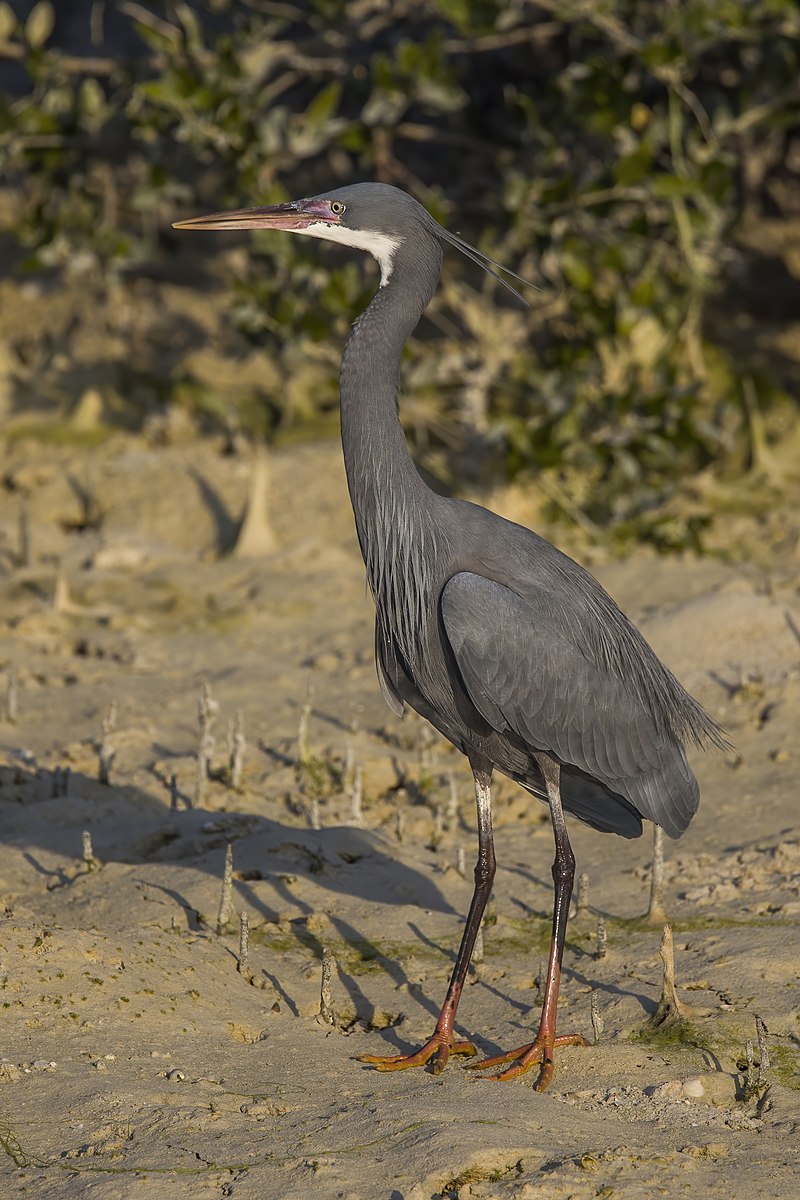
The western reef heron, also known as the western reef egret, is a medium-sized bird found in southern Europe, Africa and some parts of Asia. It usually inhabits coastal areas and has two distinctive plumage forms.
The slaty-grey form can be mistaken for the rare dark morph of the Little Egret while its white form looks similar to that of an immature Grey Heron.
This species feeds mainly on fish but will occasionally eat insects or other small aquatic animals like crabs and molluscs too.
Western Reef Herons are solitary birds that nest near water bodies where they build nests from sticks which may sometimes contain feathers or seaweed as well.
They have become endangered since their habitats have been destroyed due to human activities such as building developments along coastlines; however conservation efforts are being taken to ensure their survival into future generations.Scientific classification:
| Kingdom | Animalia |
| Phylum | Chordata |
| Class | Aves |
| Order | Pelecaniformes |
| Family | Ardeidae |
| Genus | Egretta |
| Species | E. gularis |
Also Featured In: Birds of Senegal, Birds that Live in Benin
36. Spot-Billed Pelican
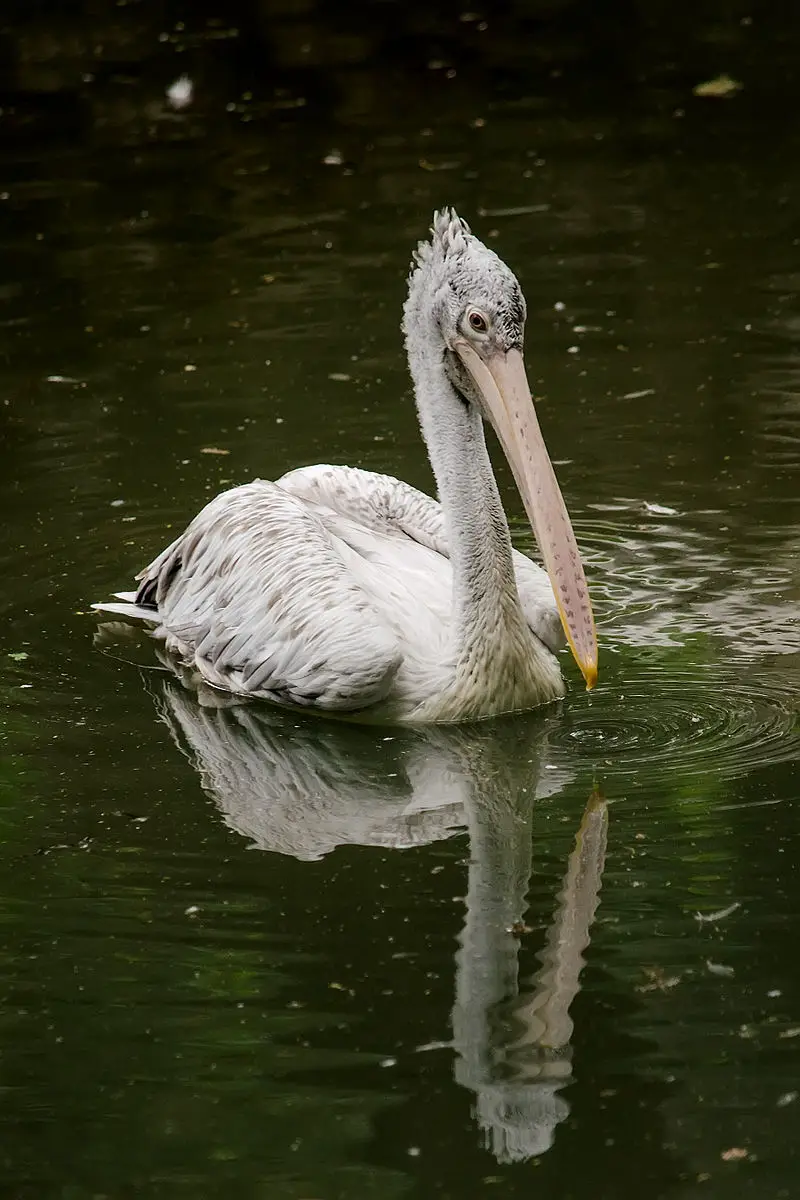
The Spot-billed Pelican is a species of the pelican family that lives in southern Asia, ranging from Iran to Indonesia. It prefers large inland and coastal waters like lakes.
These birds are quite small compared to other types of pelicans, making them difficult to identify from afar but their distinguishing feature is the spots on its bill which can be seen up close.
They feed mainly on fish by diving into water and scooping out prey with their long bills. During breeding season they build nests near bodies of water and lay two or three eggs per clutch.
The spot-billed pelican is an important part of local ecosystems as it helps keep populations of certain aquatic preys down while providing food for larger predators such as raptors and crocodiles.Scientific classification:
| Kingdom | Animalia |
| Phylum | Chordata |
| Class | Aves |
| Order | Pelecaniformes |
| Family | Pelecanidae |
| Genus | Pelecanus |
| Species | P. philippensis |
Also Featured In: Birds of Cambodia,
37. Nightjars
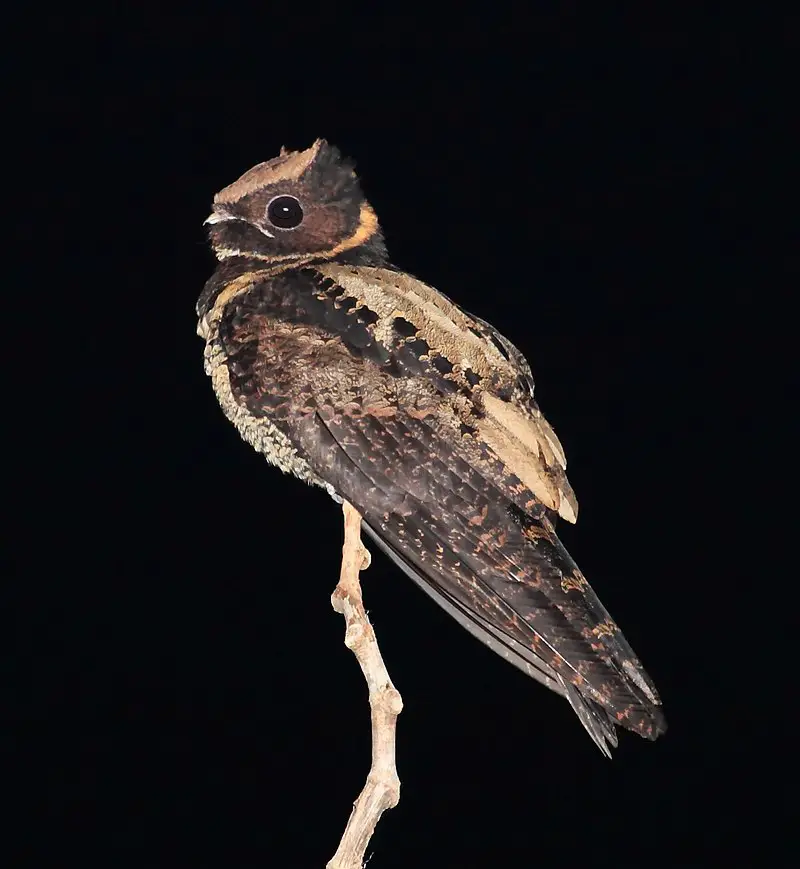
Nightjars are fascinating nocturnal or crepuscular birds belonging to the Caprimulgidae family. These medium-sized birds have long wings, short legs and very small bills.
They can be found across many parts of the world in forests, grasslands and scrubland habitats.
Nightjars feed on insects such as moths, beetles, crickets and cicadas which they catch with their sharp eyesight during night time flights over open fields when hunting for food.
Their scientific name ‘Caprimulgidae’ is derived from an old folktale that claims these birds suck milk from goats.
In reality though, they are harmless creatures who pose no threat to livestock whatsoever.
Nightjars make a variety of different calls ranging from whistles to chirps all throughout the night – adding further mystery to this amazing species.Scientific classification:
| Kingdom | Animalia |
| Phylum | Chordata |
| Class | Aves |
| Clade | Strisores |
| Order | Caprimulgiformes Ridgway, 1881 |
| Family | Caprimulgidae Vigors, 1825 |
Also Featured In: Birds of Israel, Lebanon Birds Live in Semi-Desert Areas
38. Lesser Frigatebird
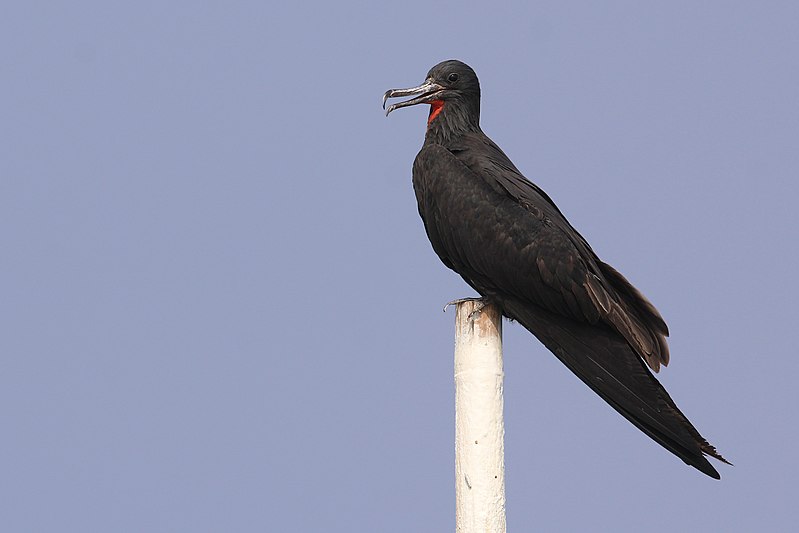
The Lesser Frigatebird is a seabird of the Fregatidae family and is known to be the smallest species in this group. It has brownish-black plumage, long narrow wings, and a forked tail.
This bird inhabits tropical and subtropical regions across the Indian Ocean, Pacific Ocean as well as off Brazil’s Atlantic Coast.
It feeds on fish taken from surface water or by plunge diving while flying low over shallow waters.
Its primary breeding grounds are located around islands with steep cliffs where it builds its nests out of twigs and grasses high up near ledges or crevices.
The lesser frigatebird can live for about 25 years due to their strong aerodynamic abilities which allow them to glide through air currents effortlessly thus conserving energy during flights that last days at a time.Scientific classification:
| Kingdom | Animalia |
| Phylum | Chordata |
| Class | Aves |
| Order | Suliformes |
| Family | Fregatidae |
| Genus | Fregata |
| Species | F. ariel |
Also Featured In: Mauritius birds, Birds that Live in the Ocean
39. Indian Cormorant
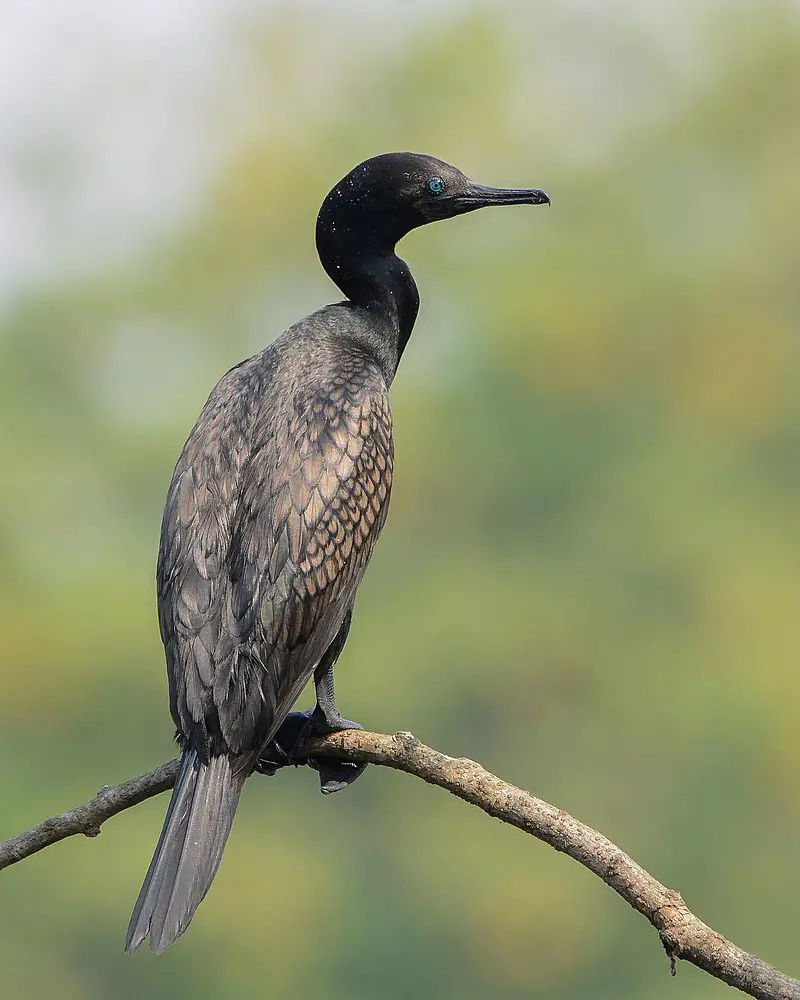
The Indian Cormorant is a beautiful bird found in the inland waters of India, stretching from Sind to Thailand and Cambodia.
It belongs to the cormorant family and has an unmistakable blue eye which sets it apart from other birds like its size-similar little cormorant.
The head is small with sloping forehead while there’s a long narrow neck connecting it to its body.
These birds are gregarious by nature, usually seen together in groups near water bodies or on land banks closeby.
They have powerful webbed feet for swimming as well as diving under water for their food – mainly fish along with some aquatic invertebrates and frogs too.
All these features make this species truly unique so keep your eyes peeled if you’re lucky enough spot them.Scientific classification:
| Kingdom | Animalia |
| Phylum | Chordata |
| Class | Aves |
| Order | Suliformes |
| Family | Phalacrocoracidae |
| Genus | Phalacrocorax |
| Species | P. fuscicollis |
Also Featured In: Maldives birds,
40. Christmas Frigatebird
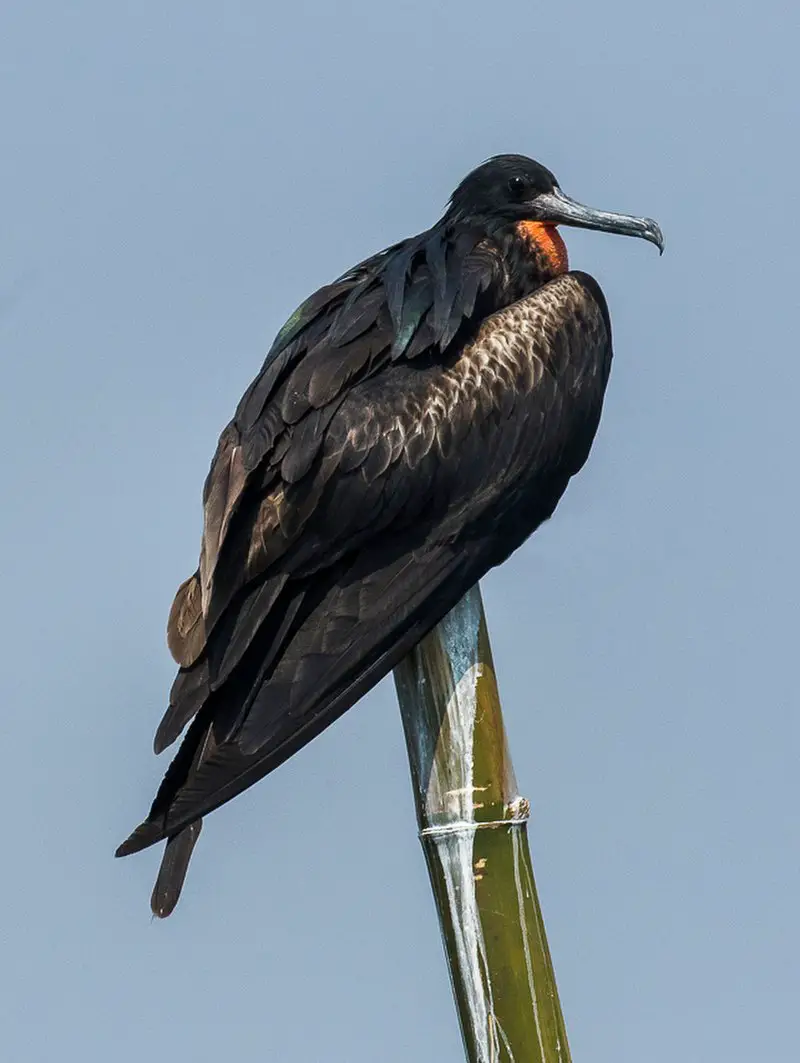
The Christmas frigatebird is a large seabird endemic to Christmas Island in the Indian Ocean.
It has an impressive wingspan of seven feet and brownish-black plumage, with long narrow wings and deeply forked tail.
The male possesses an egg shaped red gular pouch which it inflates during courtship displays.
This species can be seen soaring high into the air on thermals or gliding over open water while searching for food such as flying fish, squid, jellyfish and crustaceans.
During breeding season they form huge mixed colonies where their loud cackles often fill the sky.
Through conservation efforts this threatened species is making a comeback despite its vulnerability to habitat loss due to human activities like land development or fishing nets that may entangle them at sea.Scientific classification:
| Kingdom | Animalia |
| Phylum | Chordata |
| Class | Aves |
| Order | Suliformes |
| Family | Fregatidae |
| Genus | Fregata |
| Species | F. andrewsi |
Also Featured In: Christmas Island Birds, Common Birds of Ko Lanta
41. Yellow Bittern
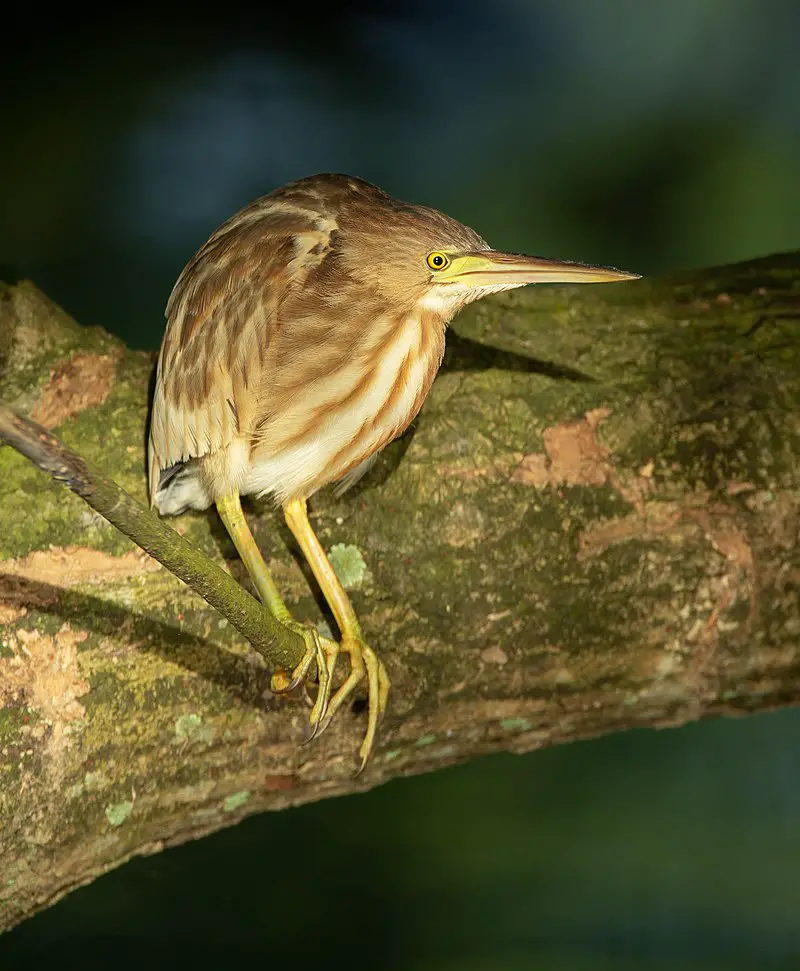
The yellow bittern is a small, Old World bird which breeds in parts of the Indian Subcontinent and East Asia. It can be found as far east as Russia and Japan, with some northern birds migrating short distances during winter.
This species has also been recorded as an unexpected vagrant to Alaska and Great Britain – one single sighting was documented at Radipole Lake in Dorset on November 23rd 1962.
Its feathers are primarily golden brown in colour, black streaks along its back contrasting against its bright chestnut-yellow neck patch; juvenile plumage appears duller but still shows distinctive markings.
Yellow bitterns feed mainly on fish or amphibians from shallow water sources such as marshes or swamps; they use their long bill to probe for prey hidden amongst reeds or grasses before seizing it quickly with their sharp talons.Scientific classification:
| Kingdom | Animalia |
| Phylum | Chordata |
| Class | Aves |
| Order | Pelecaniformes |
| Family | Ardeidae |
| Genus | Ixobrychus |
| Species | I. sinensis |
Also Featured In: Herons Species, Guam Birds You Need to See
42. Black Bittern
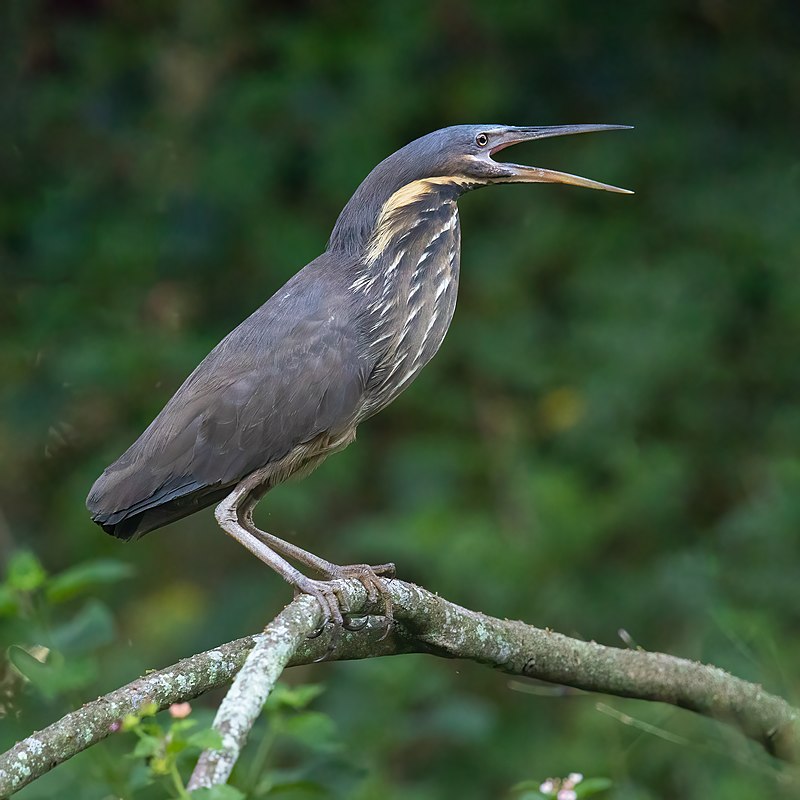
The Black Bittern is a large species of bird found in tropical Asia, stretching from Pakistan to China and Indonesia. It measures 58 cm (23 inches) long which makes it the largest bittern within its genus Ixobrychus.
The bird has black feathers on its back with white stripes running down either side, dark brown upper parts and yellow-brown underparts.
Its bill is short and thick while legs are greenish-yellow in color. They mainly reside where they breed but some northern birds migrate for shorter distances during winter seasons.
These birds feed upon fish, frogs, insects as well as small reptiles among other things making them omnivorous predators of their environment.Scientific classification:
| Kingdom | Animalia |
| Phylum | Chordata |
| Class | Aves |
| Order | Pelecaniformes |
| Family | Ardeidae |
| Genus | Ixobrychus |
| Species | I. flavicollis |
Also Featured In: Common Birds that Live in Odisha, Common Birds of Chhattisgarh
43. Grey Francolin
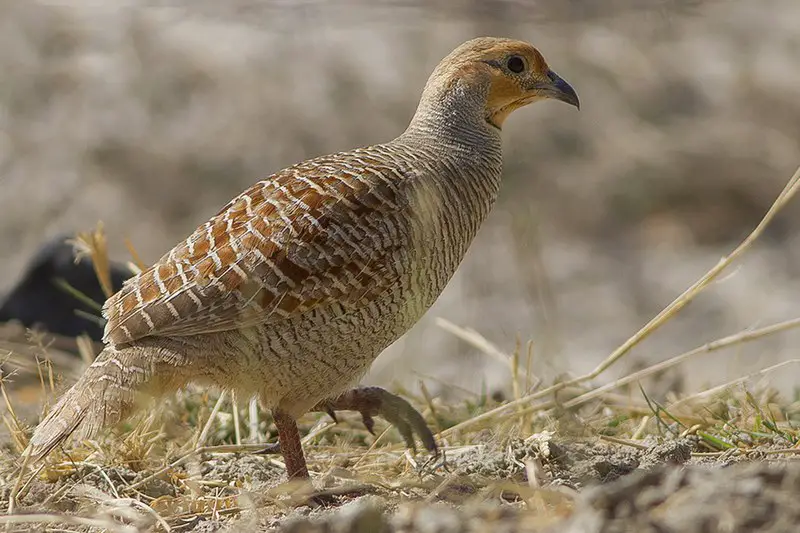
The Grey Francolin is a species of francolin found in the plains and drier parts of India, Iran and some other areas.
It was formerly called the grey partridge but should not be confused with European’s version.
This bird usually lives on ground where it finds open cultivated land. It has also been referred to as “manu moa” or “chicken bird”.
The colours can range from brownish-grey to dark grey along its body while there are black markings near its forehead area.
Its diet typically consists of seeds, leaves, insects and sometimes fruits too which they search for around bushes or tall grasses during early morning hours when these birds are most active.Scientific classification:
| Kingdom | Animalia |
| Phylum | Chordata |
| Class | Aves |
| Order | Galliformes |
| Family | Phasianidae |
| Genus | Ortygornis |
| Species | O. pondicerianus |
Also Featured In: Hawaii Birds, Hawaii Big Island Birds You Should Know
44. Shikra
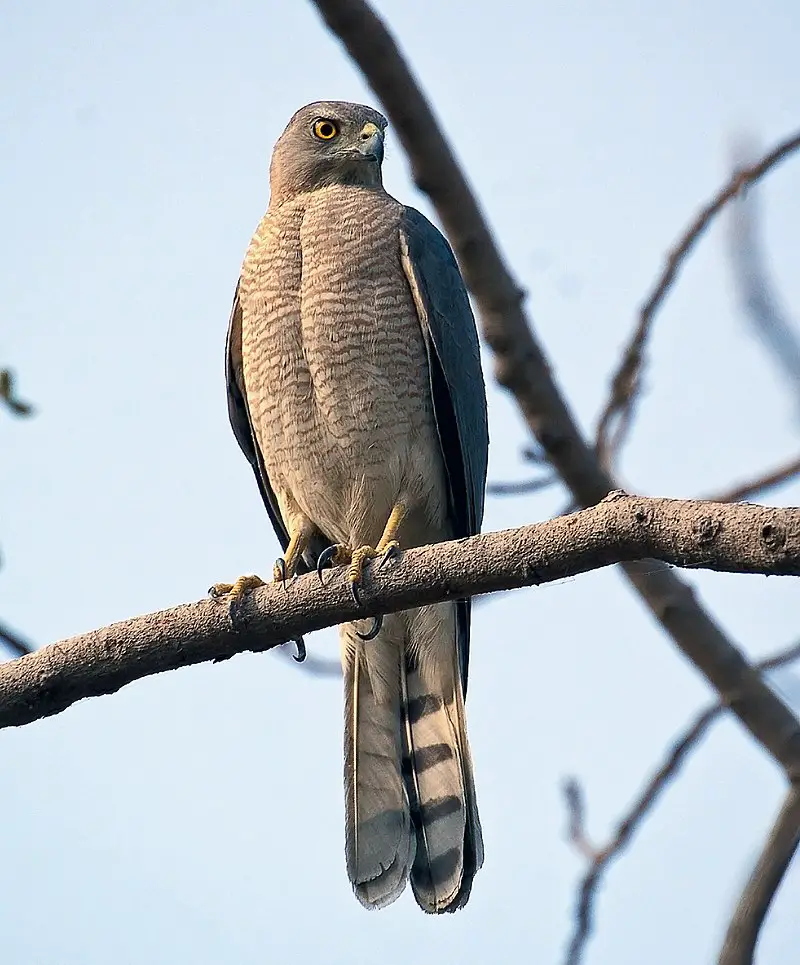
The Shikra bird, also known as the little banded goshawk, is a widespread bird of prey found in Asia and Africa. It is a small species belonging to the Accipitridae family.
The African variations of the Shikra may potentially represent a distinct species, but they are usually considered subspecies.
This bird has physical similarities to other sparrowhawk species, such as the Chinese Goshawk and Eurasian Sparrowhawk.
The Shikra is a quick predator and possesses excellent hunting skills. It typically preys on small mammals, reptiles, and birds.
The bird is known for its distinctive hunting technique, which involves a sudden dash and a quick silent strike to capture its victim.
Its plumage consists of brown or greyish-brown feathers with white and fine black streaks.
Overall, the Shikra bird is an impressive bird of prey, known for its versatility and hunting prowess.Scientific classification:
| Kingdom | Animalia |
| Phylum | Chordata |
| Class | Aves |
| Order | Accipitriformes |
| Family | Accipitridae |
| Genus | Accipiter |
| Species | A. badius |
Also Featured In: Birds That Live in the Jungle, Native Birds of Kazakhstan
45. Woolly-Necked Stork
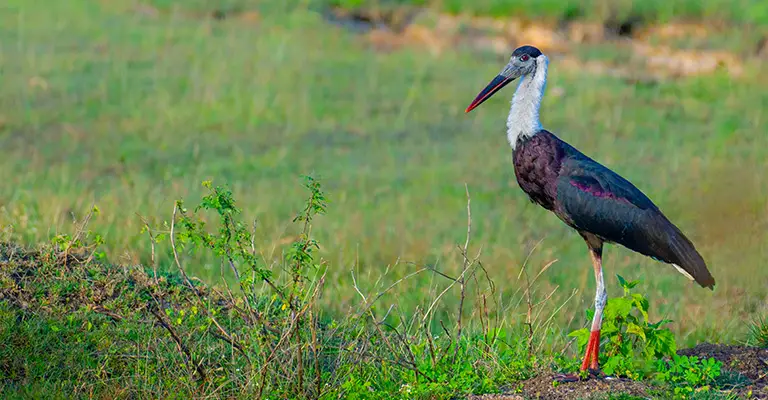
The woolly-necked stork, also known as the Asian woollyneck, belongs to the stork family and is a large wading bird.
It can be found in various habitats including forests, wetlands, and agricultural areas throughout Asia.
This bird typically breeds alone or in small groups. It is known for its long and beautiful feathers that appear woolly in texture around its neck.
The woolly-necked stork was first described by Georges-Louis Leclerc, a French polymath.
It is an important species for its role in maintaining the ecological balance within its habitat.
While their numbers may vary across different regions, these unique birds have come to be appreciated and admired by many.Scientific classification:
| Kingdom | Animalia |
| Phylum | Chordata |
| Class | Aves |
| Order | Ciconiiformes |
| Family | Ciconiidae |
| Genus | Ciconia |
| Species | C. episcopus |
Also Featured In: Birds of Goa, Birds that Commonly Found in Bali
46. Crested Goshawk
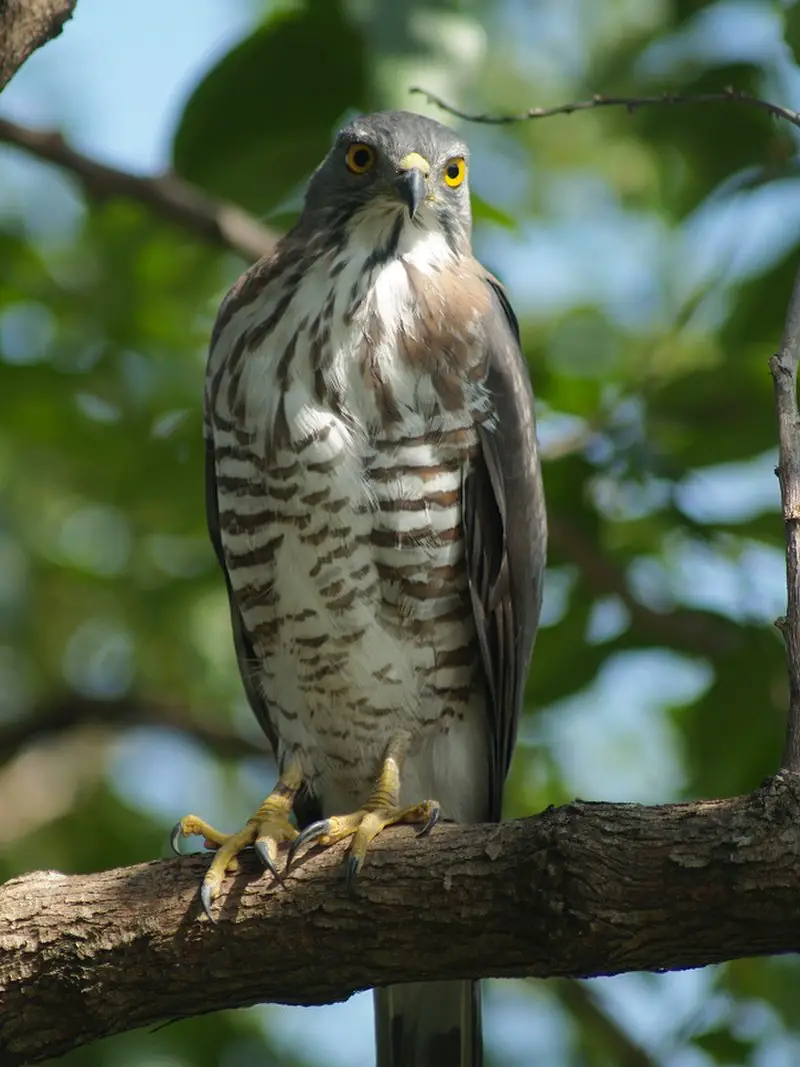
The Crested Goshawk bird is a diurnal raptor found in tropical Asia. Belonging to the Accipitridae family, it shares characteristics with buzzards, harriers, and eagles.
Its wings are short and broad, with a long tail, aiding in its movement through trees. The larger female Crested Goshawk can grow up to 46 cm in length, much bigger than the male.
These birds are skilled hunters and have adapted well to their forest habitats, using their sharp talons and beaks to catch prey.
Despite their ferocity, Crested Goshawks are still threatened by habitat destruction across Asia, rendering them vulnerable in many regions.
Overall, the Crested Goshawk bird is a graceful predator that perfectly exemplifies the beauty and ferocity of the natural world.Scientific classification:
| Kingdom | Animalia |
| Phylum | Chordata |
| Class | Aves |
| Order | Accipitriformes |
| Family | Accipitridae |
| Genus | Accipiter |
| Species | A. trivirgatus |
Also Featured In: Most Common Taiwan Birds, Ko Mak Birds You Didn’t Know
47. Red-Naped Ibis
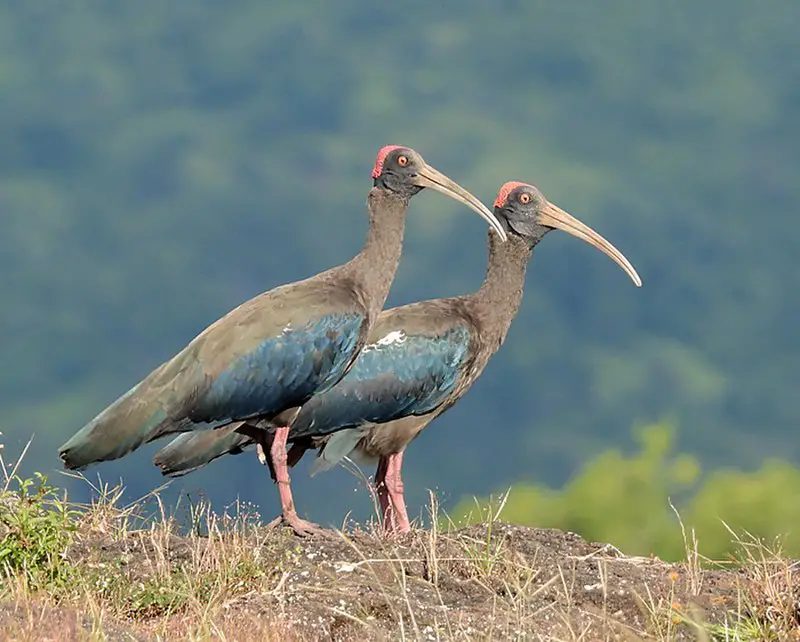
The Red-naped ibis, also known as the Indian black ibis or black ibis, is a species of bird found in the plains of the Indian Subcontinent.
This ibis is unique as it does not heavily rely on water and is often seen in dry fields far away from water bodies.
It is typically found in loose groups and is easily identifiable by its dark body with a white patch on the neck.
The Red-naped ibis, unlike other ibises in the region, can adapt to different environments and feed on a variety of prey. They are known to feed on insects, small reptiles, and even small birds.
This bird species plays an important role in controlling insect populations and is integral to its ecosystem.
Population numbers for the Red-naped ibis remain stable, making it a common sight for bird enthusiasts in the Indian Subcontinent.Scientific classification:
| Kingdom | Animalia |
| Phylum | Chordata |
| Class | Aves |
| Order | Pelecaniformes |
| Family | Threskiornithidae |
| Genus | Pseudibis |
| Species | P. papillosa |
Also Featured In: Gujarati Birds, Birds that Live in Rajasthan
48. River Tern
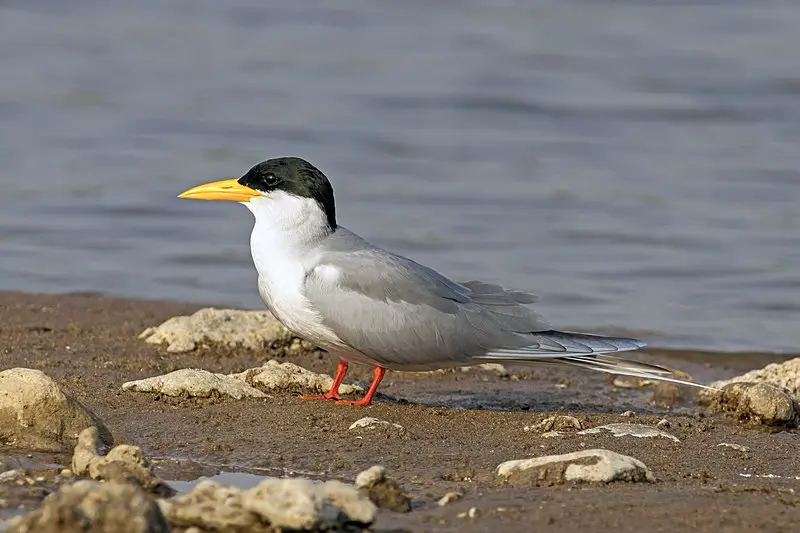
The River tern bird, scientifically known as Sterna aurantia, is a member of the Laridae family. It resides along inland rivers in the Indian Subcontinent, Iran, and eastern Myanmar to Thailand.
This bird is uncommon in Thailand. It is known for living almost exclusively in freshwater, contrary to other species in the same family.
Usually quiet when away from breeding grounds, River terns become vocal during their breeding period, which ranges from March to May.
The River terns build their nests in colonies.Scientific classification:
| Kingdom | Animalia |
| Phylum | Chordata |
| Class | Aves |
| Order | Charadriiformes |
| Family | Laridae |
| Genus | Sterna |
| Species | S. aurantia |
Also Featured In: Common Birds in Bangalore, Common Birds of Maharashtra
49. Black Eagle
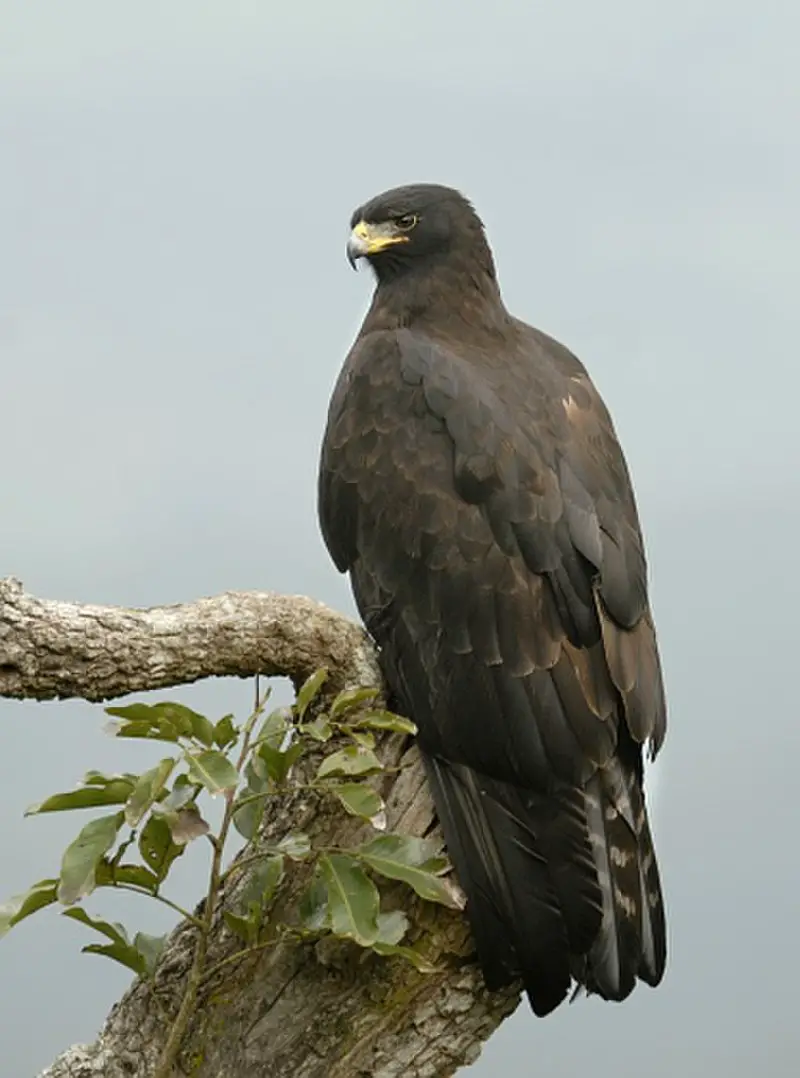
The Black eagle is a bird of prey and a member of the Accipitridae family, with unique features that distinguish it from other eagles. It is found in hilly regions of South and Southeast Asia, as well as southeastern China.
Flying over forests, it hunts mammals and birds, especially at their nests. The eagle has a widely splayed appearance, which makes it easily recognizable.
Additionally, it is the only member of the Ictinaetus genus. As a top predator, the black eagle plays an essential role in its ecosystem, maintaining the balance between predator and prey.
This magnificent bird’s presence is both significant and valuable to the environment.Scientific classification:
| Kingdom | Animalia |
| Phylum | Chordata |
| Class | Aves |
| Order | Accipitriformes |
| Family | Accipitridae |
| Genus | Ictinaetus Blyth, 1843 |
| Species | I. malaiensis |
Also Featured In: Common Birds in Kerala,
50. Indian Spotted Eagle
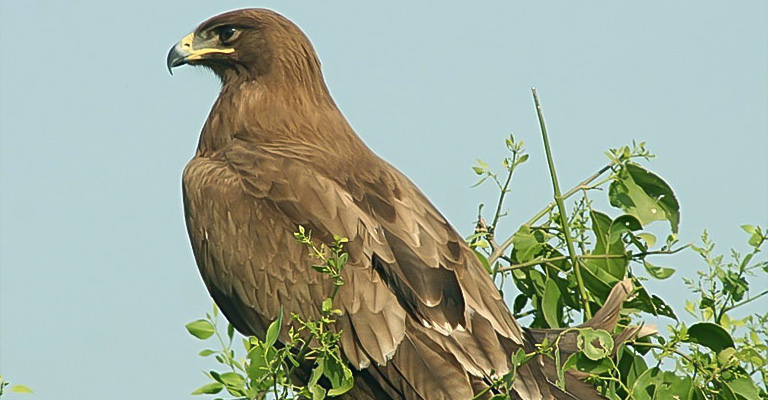
The Indian spotted eagle is a majestic bird of prey found in South Asia. It belongs to the Accipitridae family, and is similar to buteos and sea eagles in appearance.
However, recent studies suggest that typical eagles may be more closely related to slender accipitrine hawks.
This species of eagle is approximately 60 cm in length. With its distinctive spotted feathers, it is a beautiful sight to behold.
The Indian spotted eagle is a top predator in its environment, and plays an important role in maintaining the balance of the ecosystem.
Its strong talons and sharp beak make it an efficient hunter, capable of taking down prey larger than itself.
Overall, the Indian spotted eagle is a fascinating bird that serves as a symbol of power and strength.Scientific classification:
| Kingdom | Animalia |
| Phylum | Chordata |
| Class | Aves |
| Order | Accipitriformes |
| Family | Accipitridae |
| Genus | Clanga |
| Species | C. hastata |
51. Grey-Headed Fish Eagle
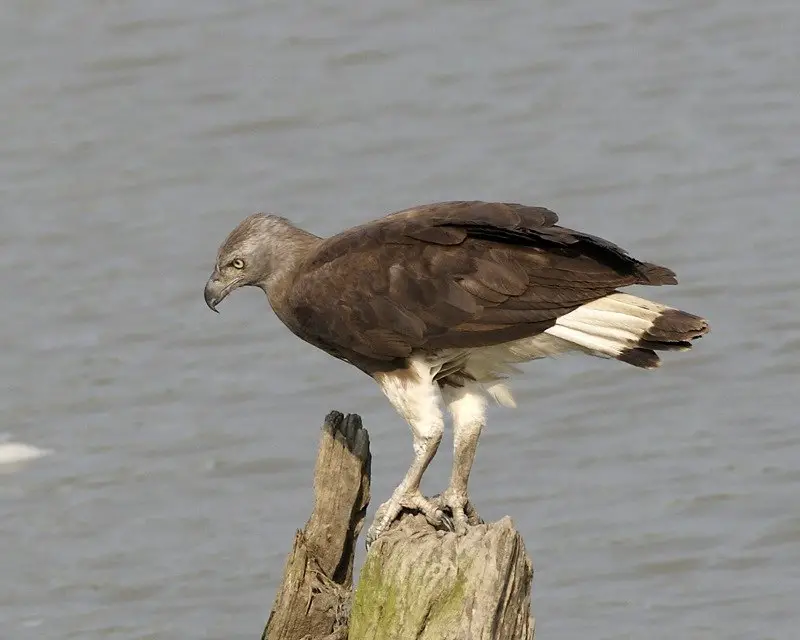
The Grey-headed fish eagle is a bird of prey found in South East Asia. It is a robust, large raptor with a dark brown upper body, grey head, and a lighter underbelly with white legs.
Juveniles are paler in coloration and have darker streaking. Often confused with the lesser fish eagle and Pallas’s fish eagle, this majestic bird primarily feeds on fish. Their diet consists of fresh and saltwater fish, amphibians, and crustaceans.
They are well adapted to hunting over water, with sharp talons to snatch prey and excellent eyesight.
This bird of prey plays a crucial role in the maintenance of aquatic ecosystems by preventing overgrowth of fish populations.
The Grey-headed fish eagle is a magnificent and impressive bird with predatory skills that make it a fearsome hunter.Scientific classification:
| Kingdom | Animalia |
| Phylum | Chordata |
| Class | Aves |
| Order | Accipitriformes |
| Family | Accipitridae |
| Genus | Haliaeetus |
| Species | H. ichthyaetus |
Also Featured In: Birds That You’ll See in Kaziranga National Park, Most Common Madhya Pradesh Birds